

Zitierweise / cite as:
Payer, Alois <1944 - >: Chronik Thailands = กาลานุกรมสยามประเทศไทย. -- Chronik 1959 / B. E. 2502. -- Fassung vom 2017-03-23. -- URL: http://www.payer.de/thailandchronik/chronik1959.htm
Erstmals publiziert: 2012-10-01
Überarbeitungen: 2017-03-23 [Ergänzungen] ; 2016-12-08 [Ergänzungen] ; 2016-12-08 [Ergänzungen] ; 2016-09-03 [Ergänzungen] ; 2016-05-21 [Ergänzungen] ; 2016-05-02 [Ergänzungen] ; 2016-03-13 [Ergänzungen] ; 2016-02-13 [Ergänzungen] ; 2016-01-08 [Ergänzungen] ; 2015-11-13 [Ergänzungen] ; 2015-10-02 [Ergänzungen] ; 2015-09-18 [Ergänzungen] ; 2015-08-29 [Ergänzungen] ; 2015-07-11 [Ergänzungen] ; 2015-04-26 [Ergänzungen] ; 2015-04-14 [Ergänzungen] ; 2015-02-10 [Ergänzungen] ; 2014-11-17 [Ergänzungen] ; 2014-10-24 [Ergänzungen] ; 2014-09-15 [Ergänzungen] ; 2014-08-27 [Ergänzungen] ; 2014-08-18 [Ergänzungen] ; 2014-04-04 [Ergänzungen] ; 2013-12-09 [Ergänzungen] ; 2013-11-04 [Ergänzungen] ; 2013-09-26 [Ergänzungen] ; 2013-08-24 [Ergänzungen] ; 2013-06-12 [Ergänzungen] ; 2013-05-20 [Ergänzungen] ; 2013-04-21 [Ergänzungen] ; 2013-02-05 [Ergänzungen] ; 2013-01-23 [Ergänzungen] ; 2013-01-12 [Ergänzungen]
©opyright: Dieser Text steht der
Allgemeinheit zur Verfügung. Eine Verwertung in Publikationen, die über übliche
Zitate hinausgeht, bedarf der ausdrücklichen Genehmigung des Herausgebers.
Dieser Text ist Teil der Abteilung
Thailand von
Tüpfli's Global Village Library
ช้างตายทั้งตัวเอาใบบัวปิดไม่มิด
|
Gewidmet meiner lieben Frau Margarete Payer die seit unserem ersten Besuch in Thailand 1974 mit mir die Liebe zu den und die Sorge um die Bewohner Thailands teilt. |
|
Bei thailändischen Statistiken muss man mit allen Fehlerquellen rechnen, die in folgendem Werk beschrieben sind:
Die Statistikdiagramme geben also meistens eher qualitative als korrekte quantitative Beziehungen wieder.
|
1959
Monatsgehälter im öffentlichen Dienst
Klasse Besoldungsstufe Baht/Monat, Stufen 4 1 450
475
500
5252 550
575
600
6253 650
675
700
725Spezial 750
800
850
9003 1 750
800
850
9002 1000
1050
1100
12002 1 1200
1300
1400
15002 1600
1750
1900
20503 2200
2350
2500
26501 1 2650
2800
3000
32002 3600
3800
4000
4300Spezial 1 4300
4600
4900
52002 5700
6200
6700
72003 7650
8000[Quelle: Siffin, William J. <1922 - 1993>: The Thai bureaucracy: institutional change and development. -- Honolulu : East-West Center, 1966. -- 291 S. ; 24 cm. -- S. 197. -- Fair use]
1954 - 1959
4593 Angehörige des öffentlichen Diensts (ausgenommen Lehrer) werden wegen Korruption und anderen Vergehen entlassen, das sind pro Jahr fast 1% des Gesamtbestandes.
1936 - 1959
"According to the records of the Civil Service Commission, between 1936 and 1959 a total of 1,391 government officials studied at academic institutions in the United States, England, and France, or were otherwise trained there, and subsequently requested that their credentials be evaluated by the CSC for salary purposes. Of these officials, 927 studied in the United States, and 330 in England. Nearly a thousand (968) were foreign graduate students, and over 60 per cent of the total group studied education, medicine, engineering, science, and business. This group, equal to about one-half of 1 per cent of the present civil service, comprises an impressive collection of technicians and professional specialists. It is reinforced by hundreds of domestic graduates, some of them exceptionally well educated, and several hundred Thais currently studying abroad, or returned since 1959." [Quelle: Siffin, William J. <1922 - 1993>: The Thai bureaucracy: institutional change and development. -- Honolulu : East-West Center, 1966. -- 291 S. ; 24 cm. -- S. 232. -- Fair use]
1959
Darstellung der Thai-Ehe in einer Veröffentlichung des Public Relations Department:
"Marriage is not conceived of as a partnership, a union of hearts, following a prevalent American view, but rather as a junction of complementary functions each by and large exclusive of each other. The union is not necessarily based on love, and a girl, especially in the provinces can be made a wife by giving a large enough sum of money to her and her parents. The girl on her side will probably not think that marriage is supposed to be the love of her life but rather to give her security, status, and the opportunity to exercise her functions as mother and mistress of the house." [Quelle: Vibul Thamavit ; Golden, Robert: The family in Thailand. -- In: Aspects and facest of Thailand. -- Bangkok : Public Relations Department, S. 3. -- Zitiert in: Genders & sexualities in modern Thailand / edited by Peter A. Jackson [[1955 - ] & Nerida M. Cook. -- Chiang Mai : Silkworm, 1999. -- 289 p. ; 23 cm. -- ISBN 9747551071. -- S. 36.]
1959
Gründung des National Research Council (NRCT, สภาวิจัยแห่งชาติ).
"Der NRCT untersteht direkt dem Premierminister und ist vor allem für die Formulierung und Implementierung der FuE-Politik zuständig. Der NRCT verfolgt folgende Ziele:
- Beratung der Regierung bei Fragen im technischen Bereich
- Überwachung des Forschungsstandes im Land, um bei der Anpassung an globale Entwicklung Unterstützung zu leisten
- Formulierung und Implementierung nationaler Forschungspolitik und -strategien
- Förderung lokaler und internationaler Zusammenarbeit
- Bereitstellung technischer Dienste und Dienste im Bereich der Forschung
- Nationales Zentrum für Forschungsinformationen"
[Quelle: http://www.kooperation-international.de/detail/info/nrct-national-research-council-of-thailand.html. -- Zugriff am 2012-03-16]
1959
Gründung des Hill Tribe Welfare Committee, um die Assimilation der Bergvölker zu beschleunigen und sie sesshaft zu machen.
1959

Tengku Abdul Jalal (aka. Adul Na Saiburi) gründet die Barisan Nasional Pembebasan Patani (BNPP) = National Liberation Front of Patani. (1980: Namensänderung in Barisan Islam Pembebasan Patani (BIPP) = Islamic Liberation Front of Patani)
Abb.: Tengku Abdul Jalal
1959
Erstmals in Thailand wird Archäologie an einer Uni unterrichtet: an der Silpakorn University (มหาวิทยาลัยศิลปากร)
1959
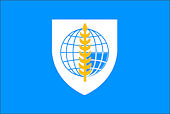
Die SEATO gründet das SEATO Graduate School of Engineering (โรงเรียนวิศวกรรมสปอ, heute: Asian Institute of Technology - สถาบันเทคโนโลยีแห่งเอเชีย).
Abb.: ®Logo
[Bildquelle: Wikipedia]
"Das Asian Institute of Technology (AIT, Asiatisches Institut für Technologie) dient der Ausbildung in den Ingenieurwissenschaften, Fortgeschrittene Technologien, dem Management und der Planung. Es hat seinen Sitz nördlich von Bangkok in Pathum Thani (ปทุมธานี), Zentralthailand. Geschichte und Aufgabe
Das Asian Institute of Technology wurde 1959 als SEATO Graduate School of Engineering gegründet, um hochqualifizierte und engagierte Ingenieure heranzubilden, die eine führende Rolle bei der anhaltenden Entwicklung in Südostasien spielen und die Integration der Region in die globalisierte Wirtschaft unterstützen sollten. Anfangs nur von den Mitgliedern der SEATO wird das Institut heute von Institutionen weltweit gefördert.
Bis November 1967 wurde die Schule von der Fakultät für Ingenieurwissenschaften der Chulalongkorn-Universität (จุฬาลงกรณ์มหาวิทยาลัย) unterhalten, ehe es als unabhängiges Institut etabliert wurde.
2006 reklamierte das Asian Institute of Technology eine führende Rolle bei der weiteren Ausbildung von Graduierten in der Region, wobei man sowohl mit dem öffentlichen als auch mit dem Privatsektor sowie mit einigen der besten Universitäten der Welt zusammenarbeite.
LageDer Campus des Instituts liegt direkt neben dem Rangsit-Zentrum (รังสิต) der Thammasat-Universität in Pathum Thani, etwa 40 km nördlich des Stadtzentrums von Bangkok. Nicht weit entfernt befindet sich auch der Science Park Pathum Thani. Neben dem Campus in Thailand bestehen weitere Ableger in Vietnam (AIT Center Vietnam, seit 1993 in Hanoi) und in Planung befindliche Zentren in Indonesien und Pakistan.
OrganisationDas Asian Institute of Technology besteht aus drei Schulen, der AIT-Erweiterung, den AIT Center in Vietnam und in Indonesien.
Die drei Schulen sind
Auszeichnungen
- Schule für Ingenieurwesen und Technologie (School of Engineering and Technology, SET)[1]
- Schule für Umwelt, Ressourcen und Entwicklung (School of Environment, Resources and Development, SERD)[2]
- Schule für Management (School of Management, SOM)[3]
1989 erhielt das Asian Institute of Technology den Ramon Magsaysay Award für Frieden und Völkerverständigung "für die Schaffung einer neuen Generation von Ingenieuren und Managern, die für Asien wirken, in einer Atmosphäre der wissenschaftlichen Leistungsfähigkeit und regionalen Verständigung".
StudentenEtwas mehr als 100 akademische Mitarbeiter (aus 22 Ländern) betreuen fast 2.000 Studenten aus 50 Ländern.
MitgliedschaftenDas Asian Institute of Technology ist Mitglied im Greater Mekong Subregion Academic and Research Network und im LAOTSE, einem internationalen Netzwerk führender Universitäten in Europa und Asien.
.thDas Institut betreut die Toplevel-Domain .th für Thailand.
Bekannte ehemalige Studenten und Dozenten
- Anand Panyarachun (อานันท์ ปันยารชุน, 1932 - ), ehemaliger Premierminister von Thailand"
[Quelle: http://de.wikipedia.org/wiki/Asian_Institute_of_Technology. -- Zugriff am 2011-11-12]
1959


Beginn des SEATO Cholera Research Project in Bangkok.
Abb.: AFRIMS Forschungsgebiete in Thailand
[Bildquelle: http://www.afrims.org/fieldsite-thailand.html#thailand. -- Zugriff am 2015-04-26]
"The Armed Forced Research Institute of Medical Sciences (AFRIMS) was founded as the result of a mutual agreement between the Thai and United States Governments to battle a widespread cholera epidemic in Bangkok and Thonburi (ธนบุรี) during 1958-1959. Scientists, researchers and physicians under the leadership of the Royal Thai Army Medical Department’s Institute of Pathology, the United States Army’s Walter Reed Army Institute of Research (WRAIR) and the US Naval Medical Research Unit No. 2 (NAMRU-2) worked together to counter the cholera epidemic. Later, the Thai and US Governments recognized the importance of the medical cooperative effort and agreed on continuing joint medical research efforts. AFRIMS then began a series of transformations with expanded missions. In 1959, the SEATO Cholera Research Laboratory was established in Bangkok as proposed by the 5th meeting of the SEATO Council.
In 1960, the SEATO Cholera Research Laboratory in Bangkok changed its name to the SEATO Medical Research Laboratory as proposed by the US party in the 6th meeting of the SEATO Council. The Letter of Approval and the Letter of Agreement with respect to the said transformation was exchanged between the Thai and the US Governments on December 23, 1960.
In 1961, the Royal Thai Ministry of Defense approved the establishment of the SEATO Medical Research Project Office, by the order of Ministry of Defense (Specific), dated September 26, 1961, effective October 1961 under the Supervision of MG Phung Phintuyothin [พึ่ง พินทุโยธิน], the first Director of the SEATO Medical Research Laboratory and Felsenfeld [Oscar Felsenfeld, 1906 - 1978], the first Commander of the United Medical Component.
The SEATO Medical Research Laboratory was renamed the Armed Forces Research of Medical Sciences (AFRIMS) on June 30, 1977 as a result of the dissolution of SEATO."
[Quelle:http://www.afrims.org/images/afrims-history-printsize.jpg. -- Zugriff am 2015-04-26]
1959
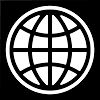
Es erscheint:
A public development program for Thailand : report of a mission organized by the International Bank of Recoconstruction and Development at the request of the Government of Thailand. -- Baltimore : Johns Hopkins Press, 1959. -- 301 S. : Ill. ; 24 cm. -- Online: http://www-wds.worldbank.org/external/default/WDSContentServer/WDSP/IB/2002/11/15/000178830_98101901522358/Rendered/PDF/multi0page.pdf. -- Zugriff am 2015-08-29
Abb.: Titelblatt
Abb.: Irrigation development
[a.a.O., nach S. 38]
Abb.: Railway and main highway network
[a.a.O., Nach S. 136]
"Low morale is a potent cause of slackness and poor work, and an important contribution to low morale in Thailand’s civil service is the level of pay. For comparable jobs in private employment, salaries are typically two to three times as high. It is therefore not surprising that many of the ablest of the nation’s young men and women tend to shun government employment, or that many leave the civil service at the first opportunity. Only the long-standing prestige of government service, and the extra security it offers, enable it to attract and hold as many good persons as it does. Conditions were very different before the war. Then, government salaries were close to those in industry and commerce.
The inflation of the war and post-war years created a serious disparity. A cost-of-living adjustment made in 1952 attempted to bring civil service salaries into line with those in the private sector, but since then the latter have doubled and tripled. Since the civil servant’s basic salary is only about 10% of his total pay including the cost-of-living adjustment and since his retirement pension is based upon that 10%, being in most cases not more than 20% of the total adjusted salary, a very real problem is created for officials retiring at the mandatory retirement age of 60.
An attack on this problem of low pay should not be delayed. For as the nation's economic development gathers momentum, opportunities for employment at good wages in private enterprise are going to multiply. Therefore inaction can only make matters worse.
Rather than make piecemeal adjustments to the present salary structure, the Government should undertake a thorough study of the whole problem. The study should lead to the preparation of a plan to standardize and adjust salaries that would take into account salary levels in the private sector and also recognize the growing need to provide adequate pay to attract the engineers, economists, statisticians, educators and administrators the Government needs now and will need increasingly in the future.
A conscious effort to reduce the redundant number of government employees could help hasten the day when more adequate salaries will be paid. Positions vacated by resignation, death or retirement should not be filled if—as would often be the case—the work could be assigned to the remaining employees without overburdening them. Moreover, as the Government has to provide new services, employees with the needed qualifications should be transferred from overstaffed agencies or from offices whose work is of low priority. To ensure that this is done, it is recommended that a central office be established to undertake the management analysis necessary to develop a program of administrative reforms. Its most advantageous location would be in the Office of the Prime Minister and its work should be closely tied with the budget process. The necessary staff, both for this office and for representatives to be assigned to the different Ministries, would have to be trained. This office should study the re-grouping of government functions, the precise nature of work objectives and the existing assignment of work, and should prepare plans to deal with these matters."
[a.a.O., S. 226]
1959
Eröffnung des Surakul-Stadions (สนามกีฬาสุระกุล) in Phuket (ภูเก็ต).
Abb.: Lage von Phuket (ภูเก็ต)
[Bildquelle: OpenStreetMap. -- Creative Commons Lizenz (Namensnennung, share alike)]
Abb.: Surakul-Stadion (สนามกีฬาสุระกุล), Phuket (ภูเก็ต)
[Bildquelle: Christian Bellgardt / Wikipedia. -- GNU FDLicense]
"Das Surakul-Stadion (Thai: สนามกีฬาสุระกุล) ist ein Multifunktionsstadion auf der Insel Phuket in Thailand. Das Stadion wurde bereits 1959 eröffnet. Genutzt wird es für vielerlei verschiedene Veranstaltungen. Zuletzt fanden in diesem Stadion Spiele des King’s Cup 2009 statt. Das größte Event jedoch war die Austragung der ASEAN-Fußballmeisterschaft 2008. Ursprünglich als Austragungsort geplant war Bangkok. Aufgrund der politischen Unruhen und der Besetzung des Flughafens in Bangkok wurde der Austragungsort kurzfristig nach Phuket verlegt. Das Surakul-Stadion war dabei nicht die erste Wahl, gibt es doch Stadien in anderen Städten Thailands, welche einen besseren Komfort bieten und moderner sind. Phuket jedoch war sowohl für die teilnehmenden Mannschaften als auch die Zuschauer am leichtesten mit dem Flugzeug zu erreichen. Phuket konnte erstmals erfolgreich beweisen, dass es tauglich ist für größere Fußballveranstaltungen.
Kurz nach Ende des Turniers wurde auch der Verein Phuket FC gegründet, welcher jetzt seine Heimspiele in diesem Stadion austrägt. Das Stadion ist im Besitz der Phuket Provincial Administration Organisation. Es ist somit eines der wenigen Stadien in Thailand welches sich in der Hand lokaler Behörden befindet. Dies wiederum macht es schwierig, aufgrund fehlender finanzieller Mittel, das Stadion zu sanieren und andere Großsportveranstaltungen in der Zukunft hier stattfinden zu lassen."
[Quelle: http://de.wikipedia.org/wiki/Surakul-Stadion. -- Zugriff am 2011-11-14]
1959

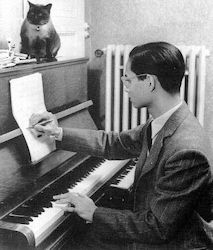
Kompositionen König Bhumibols 1959:
- Somewhere Somehow - ฝัน bzw 1966: เพลินภูพิงค์
- englischer Text von Prinz Chakrabandh Pensiri (พระเจ้าวรวงศ์เธอ พระองค์เจ้าจักรพันธ์เพ็ญศิริ, 1909 - 1993)
- Thai-Text ฝัน von Mr. Sriswad Pichitvarakarn (ศรีสวัสดิ์ พิจิตรวรการ)
- Text เพลินภูพิงค์ ("Delightful Phuphing", 1966): Thanpuying Maniratana Bunnag (ท่านผู้หญิงมณีรัตน์ บุนนาค, 1922 - 2000), auf Wunsch der Königin
- Royal Marines March - มาร์ชราชนาวิกโยธิน (1959-06-28), auf Wunsch von Admiral Sanong Nisaluck (พล.ร.ต.สนอง นิสาลักษณ์, 1916 - ), Kommandant des Royal Thai Marine Corps. Uraufführung 1959-07 bei einem Besuch der Seventh Fleet der USA in Thailand.
Originaltext: Royal Marine Corps VADM Jaturong Punkongchuen (จตุรงค์ พันธุ์คงชื่น) and VADM Sumitr Chuenmanus (สุมิตร ชื่นมนุษย์)
Textrevision: M.L. Praphan Snidvongs (หม่อมหลวงประพันธ์ สนิทวงศ์, 1919 - 2003), Thanpuying Maniratana Bunnag (ท่านผู้หญิงมณีรัตน์ บุนนาค, 1922 - 2000), RADM Juab Hongsakul (จวบ หงสกุล), RADM Preecha Disyanan (ปรีชา ดิษยนันทน์), Mr. Manrat Srikaranonda (แมนรัตน์ ศรีกรานนท์, 1928 - )
Der Song auf Spotify:
URI: spotify:track:6n6A6TLVLdc6F7monbo0mw
URL: https://open.spotify.com/track/6n6A6TLVLdc6F7monbo0mw- A love Story (Kinari Suite) - ภิรมย์รัก: für Manohra-Ballett (มโนราห์)
- Thai-Text von RADM Preecha Disyanan (ปรีชา ดิษยนันทน์)
- englischer Text von Prinz Chakrabandh Pensiri (พระเจ้าวรวงศ์เธอ พระองค์เจ้าจักรพันธ์เพ็ญศิริ, 1909 - 1993)
Der Song auf Spotify:
URI: spotify:track:73x75aC6V3qK0v4OVP8Qwf
URL: https://open.spotify.com/track/73x75aC6V3qK0v4OVP8Qwf
Nature Waltz: für Manohra-Ballett (มโนราห์)
- The Hunter: für Manohra-Ballett (มโนราห์)
- Kinari Waltz: für Manohra-Ballett (มโนราห์)
- Pra Maha Mongkon - พระมหามงคล: Hymne der Suntharaporn Band (วงดนตรีสุนทราภรณ์) zum 20. Jubläum des Jazzband 1959-11-20
- Alexandra - แผ่นดินของเรา: zu Ehren von Alexandra Helen Elizabeth Olga Christabel of Kent anlässlich ihres Thailandbesuchs.
- englischer Text: M.R. Seni Pramoj (หม่อมราชวงศ์เสนีย์ ปราโมช, 1905 - 1997)
- Später schreibt Thanpuying Maniratana Bunnag (ท่านผู้หญิงมณีรัตน์ บุนนาค, 1922 - 2000) einen patriotischen Text dazu unter dem Titel แผ่นดินของเรา ("Our Motherland"). "The composition was made at the request of Her Majesty the Queen who felt that more music for patriotism wouldn't hurt anyone; she saw it fitting to have this sweet tune do a few extra notes for the country. To Her Majesty, a gentle patriotic tune would do a better job of persuasion than a hard-boiled march. Thanpuying Maniratana said, "While His Majesty, at Her Majesty's request, was playing 'Alexandra' on the piano, adding the middle and end movements and filling up the entire 32 bars, I listened and made up the lyrics right then and there."" [Quelle: http://thailand.prd.go.th/ebook/king_music/melodies.html. -- ZUgriff am 2013-12-09]
Text von M.R. Seni Pramoj (หม่อมราชวงศ์เสนีย์ ปราโมช):
- "Alexandra
- Welcome to thee
- Here in this land of sunshine and of flowers
- May ye be blessed by the blessing
- That has made our country happy"
แผ่นดินของเรา / von Thanpuying Maniratana Bunnag (ท่านผู้หญิงมณีรัตน์ บุนนาค
- ถึงอยู่แคว้นใด ไม่สุขสำราญ
- เหมือนอยู่บ้านเรา ชื่นฉ่ำค่ำเช้าสุขทวี
- ทรัพย์จากผืนดิน สินจากนที
- มีสิทธิ์เสรี สันติครองเมือง
เรามีป่าไม้อยู่สมบูรณ์ ไร่นาสดใสใต้ฟ้าเรือง
- โบราณสถานส่งนามประเทือง เกียรติเมืองไทยขจรไปทั่วแดนไกล
- รักชาติของเรา ไว้เถิดผองไทย
- ผืนแผ่นแหลมทอง รวมพี่รวมน้องด้วยกัน
- รักเกียรติรักวงศ์ เสริมส่งสัมพันธ์
- ทูนเทิดเมืองไทยนั้น ให้ยืนยง
(ซ้ำ *)
[Quelle: th.Wikipedia. -- Zugriff am 2013-12-08]
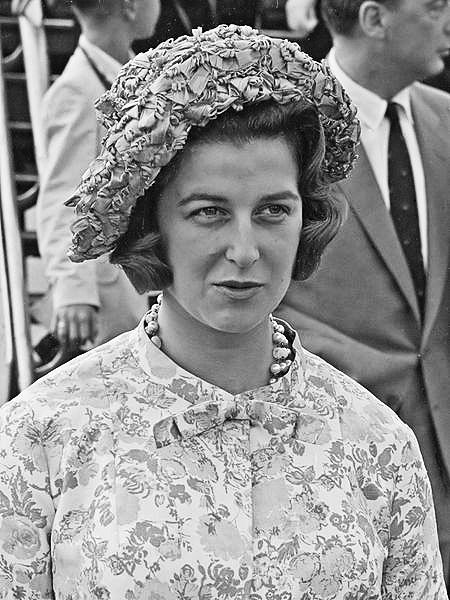
Abb.: Alexandra Helen Elizabeth Olga Christabel of Kent,
1961
[Bildquelle: Harry Pot / Anefo / Wikimedia. --
Creative Commons
Lizenz (Namensnennung, share alike)]
1959
Der Bandleader Phiphat Boribun (พิพัฒน์ บริบูรณ์, 1937 - 2013 ) schreibt den Song
ผู้ใหญ่ลี [Bürgermeister Li]
Er wird in der Interpretation durch Saksri Sriakson (ศักดิ์ศรี ศรีอักษร, 1937 - ) zu einem jahrelangen Hit. Saksri schafft damit den Sprung unter die Spitzenstars. Für einen Auftritt in Bangkoker Nachtklubs bekommt sie 12.000 Baht.
Der Song auf Spotify:
URI: spotify:track:2SWjUr5um6MZMiJRy5Y7bg
URL: https://open.spotify.com/track/2SWjUr5um6MZMiJRy5Y7bg
Abb.: Plattenhülle
[Fair use]
1959
Erstmals erscheint die Zeitschrift วารสารอส. (Or Sor Magazin) des Volunteer Defence Corps (Or Sor) (อส. = กองอาสารักษาดินแดน).
1959
Es erscheint die Sammlung von Kurzgeschichten
ลาว คำหอม [Lao Khamhawn aka. Khamsing Srinawk - คำสิงห์ ศรีนอก] <1930 - >: ฟ้าบ่กั้น [Übersetzung ins Englisch: "The Politician and other stories"]
Abb.: Einbandtitel einer Ausgabe
"A year after his time in the forestry service, Khamsing began publishing short stories in the newspaper Piyamit (Thai: ปิยะมิตร) [Dear Friend]. Other publications where his work appeared include: Chiwit, Sangkhomsat Parithat, Khwuan Chai and Chathurat. This corresponded with the relatively free press Thailand enjoyed during the years of 1955-58. Due to the growing political power-struggle between CIA backed Phao Sriyanond and Pentagon supported Sarit Thanarat Thai writers and intellectuals were free to express their ideas. This atmosphere of free press quickly burgeoned after the September 16, 1957 coup that drove Phao and Plaek Pibulsonggram into exile. Anderson argues that Khamsing's Fáa Bɔ̀ Kân [ฟ้าบ่กั้น], a collection of many of his stories originally published in Piyamit, best symbolizes this period of intellectual freedom. Shortly after the publication of Fáa Bɔ̀ Kân, Sarit seized power and established an absolute regime. Sarit's regime instated strict censorship, ending the period of free-thought through imprisonment, exile and execution (only one or two cases) of Thai intellectuals, writers, and progressives.[18] This crackdown on progressives and independent press forced Khamsing to abandon writing for a number of years, during which time he returned to Khorat to his farm." [Quelle: http://en.wikipedia.org/wiki/Khamsing_Srinawk. -- Zugriff am 2014-09-15]
1959
Inserate in der Zeitung 新暹日報 (Sing Sian Yit Pao):
FAB
Modess super-soft
1954 - 1959

USOM (United States Operations Mission) finanziert von 1951 - 1965 den Fernstraßenbau in Thailand mit $ 350 Mio., hauptsächlich zwischen 1954 und 1959. Die wichtigsten Straßenprojekte sind
- Friendship Highway von Saraburi (สระบุรี) nach Korat (โคราช): die USA bezahlen $ 13,6 Mio. von den Gesamtkosten $ 20 Mio.
- Bangkok-Saraburi (สระบุรี)) Highway (1957 - 1965)
- East-West Highway von Phitsanulok (พิษณุโลก) nach Lomsak (หล่มสัก) (1955 - 1960)
Abb.: Lage der genannten Fernstraßen
[Bildquelle: CIA. -- Public domain]
ca. 1959 - 1966

Robert Jantzen ist CIA station chief in Bangkok.
1959

Es erscheint:
Mosel, James N. (Norman) <1918 - >: Thai administrative behavior. -- In: Toward the comparative study of public administration / ed. by William J. Siffin. -- 1957.
"Because of the looseness of the social structure, respect and deference do not necessarily imply obedience, although outward disobedience is almost unthinkable. In case of non-compliance action simply peters out. . . . The culture places great value on internal equanimity, upon being choey or having a "cool heart [ใจเย็น]." This enables one to take life as it comes, without strain or excitement. To be choey is to be without anxiety, to rest at ease, survey and weigh the situation, accept cheerfully what must be, and then take advantage of the circumstances, including the stupidity of others. The maintenance of a "cool heart" is supported by an attitude epitomized in the common phrase mai pen rai, meaning "it’s of no importance," "never mind." The expression is more than a phrase; it symbolizes a defense mechanism for minimizing events which might otherwise disturb a "cool heart."" [Zitiert in: Siffin, William J. <1922 - 1993>: The Thai bureaucracy: institutional change and development. -- Honolulu : East-West Center, 1966. -- 291 S. ; 24 cm. -- S. 129. -- Fair use]
1959

Hauptsächlich US-Amerikaner gründen in Bangkok das Amateur Community Theatre (ACT). 1972 vereinigt es sich mit der 1963 gegründeten britischen Dramatic Society (BDS) zum Bangkok Community Theater (BCT).
1959

Es erscheint der erste Emmanuelle-Roman von Emmanuelle Arsan (1940/1932 - ).
Abb.: Einbandtitel einer deutschen Übersetzung, 2012
"Emmanuelle Arsan (* 1940, anderen Quellen zufolge 1932, in Bangkok; eigentlich Marayat Rollet-Andriane, geborene Bibidh) ist eine französische Schriftstellerin thailändischer Herkunft, die aufgrund ihrer Emmanuelle-Romane und aufgrund der nach diesen Romanen gedrehten Filme weltweit bekannt wurde. Leben
Sie wurde als Marayat (มารยาท) Bibidh in Bangkok geboren. Im Alter von 16 (anderen Quellen zufolge 20) Jahren heiratete sie den französischen UNESCO-Diplomaten Louis-Jacques Rollet-Andriane.
Die ersten beiden Romane der Emmanuelle-Serie wurden 1959 und 1960 im Pariser Verlag von Eric Losfeld verlegt. Die Romane wurden ein großer Erfolg, obwohl sie auf Grund der Zensurvorschriften nicht beworben werden durften. 1967 und 1968 erfolgte eine offizielle Neuauflage, der weitere Bände der Serie und auch andere Bücher der Autorin folgten. Die ab den 1970er-Jahren gedrehten Emmanuelle-Filme machten die Autorin endgültig bekannt.
Als Marayat Andriane spielte sie in dem Film Kanonenboot am Yangtse-Kiang (OT: The Sand Pebbles, 1966, mit Steve McQueen) eine Nebenrolle und war 1967 auch in einer Episode der Western-Fernsehserie Big Valley zu sehen. 1975 führte sie bei der Verfilmung ihres eigenen Romans Laure Regie und spielte auch selbst mit.
Fragliche AutorenschaftDer Produzent von Laure, Ovidio G. Assonitis, behauptete im Jahr 2007, dass die Bücher und Filmskripte nicht von Marayat Rollet-Andriane, sondern von ihrem Ehemann Louis-Jacques Rollet-Andriane geschrieben worden seien; dieser habe auch Regie bei Laure geführt. Ursprünglich habe er die seinerzeit schockierenden Bücher unter Pseudonym veröffentlicht, um seine Diplomatenkarriere nicht zu gefährden, später habe dann seine Frau die Rolle der Emmanuelle Arsan angenommen. Assonitis beschreibt Louis-Jacques Rollet-Andriane als „sehr intellektuell“, aber auch als einen „sehr seltsamen Typ“; er sei ein „sexueller Maniker, allerdings mehr im geistigen als im praktischen Sinne.“[1]
Werke (Originalausgaben)
- Emmanuelle – Eric Losfeld (klandestine Ausgabe), 308 S. 1959.
- Emmanuelle L'Anti-vierge – Eric Losfeld (klandestine Ausgabe), 356 S. 1960.
- Emmanuelle Livre 1 – La leçon d'homme – Paris, Eric Losfeld, Le Terrain Vague, 232 S. 1967.
- Emmanuelle Livre 2 – L'anti-vierge – Paris, Eric Losfeld, Le Terrain Vague, 296 S. 1968.
- Epître à Paul VI (Lettre ouverte au pape, sur la pilule) – Paris, Eric Losfeld, 1968.
- Emmanuelle Livre 3 – Nouvelles de l'érosphère – Paris, Eric Losfeld, Le Terrain Vague, 215 S. 1969.
- Dessins érotiques de Bertrand vol. 1- Pistils ou étamines, une liesse promise – Paris, Eric Losfeld, 1969.
- Dessins érotiques de Bertrand vol. 2 – Paris, Eric Losfeld, 1971.
- Mon "Emmanuelle", leur pape, et mon Eros – Paris, Christian Bourgeois, 219 S. 1974.
- Emmanuelle Livre 4 – L'hypothèse d'Eros – Paris, Filipacchi, 287 S. 1974.
- Emmanuelle Livre 5 – Les enfants d'Emmanuelle – Paris, Opta, 317 S. 1975.
- Laure – Paris, Pierre Belfond, 312 S. 1976.
- Néa – Paris, Opta, 264 S. 1976.
- Toute Emmanuelle – Paris, Pierre Belfond, 224 S. 1978.
- Vanna – Paris, Pierre Belfond, 315 S. 1979.
- Emmanuelle à Rome – Toulouse, Livre d'Oc, 280 S. 1979.
- Une nuit (Sainte louve) – Paris, Pierre Belfond, 352 S. 1983.
- Les soleils d'Emmanuelle – Paris, Pierre Belfond, 264 S. 1988.
- Emmanuelle – Paris, Robert Lafond, 1988. Version définitive.
- Les Débuts dans la vie – Paris, Le Grand Livre du mois, 191 S. 1989.
- Valadié – Paris, Editions Lignes, 190 S. 1989.
- Chargée de mission – Paris, Pierre Belfond, 201 S. 1991.
- Bonheur – Les Cahiers de l'Egaré, 91 S. 1993.
- Aurélie – Paris, Pierre Belfond, 213 S. 1994.
- La siamoise nue – Paris, Le Cercle, 552 S. 2003."
[Quelle: http://de.wikipedia.org/wiki/Emmanuelle_Arsan. -- Zugriff am 2012-06-07]
1959

Es erscheint
Damrong Rajanubhab [ดำรงราชานุภาพ <สมเด็จพระเจ้าบรมวงศ์เธอ กรมพระยา>] <1862 - 1943>: La vie du poète Sounthone-Bhou / trad. du siamois par Camille Notton. -- Limoges : Rougerie, 1959. -- 104 S. : Ill. ; 22 cm. -- Originaltitel: ประวัติของสุนทรภู่ (1922)
Abb.: Titelblatt
1959
Es erscheint der Song:
Pongsri Woranuch [ผ่องศรี วรนุช] <1939 - >: ไหนว่าไม่ลืม (Vergisst du nicht?). -- Es ist 1959 und 1960 ein Hit
Der Song auf Spotify:
URI: spotify:track:6JVliJ2gxhrTOgVvfRHi9x
URL: https://open.spotify.com/track/6JVliJ2gxhrTOgVvfRHi9x
Abb.: Plattenhülle
1959

Es erscheint:
Music of Thailand / recorded by Howard Keva Kaufman. -- Folkways Records, 1959. -- (Ethnic folkways library). -- FE 4463. -- 1 LangspielplatteDas Album auf Spotify:
URI: spotify:album:32ooWSTwi6NECRenCqX3vY
URL: https://open.spotify.com/album/32ooWSTwi6NECRenCqX3vY
Abb.: Plattenhülle
1959
Briefmarken:
1959-01-01
Eröffnung des Opium Addicts Welfare Centre in Pathum Thani (ปทุมธานี). Das Center kann 8000 Opiumsüchtige aufnehmen.
Abb.: Lage von Pathum Thani (ปทุมธานี)
[Bildquelle: OpenStreetMap. -- Creative Commons Lizenz (Namensnennung, share alike)]
1959-01-10
Mit Proklamation (Decree) No. 43 werden Besserungsanstalten für nach Proklamation No. 21 (1958-11-02) festgenommene jugendliche Gewalttäter (อันธพาล) geschaffen.
Abb.: Nach Proklamation No. 21 und 43 verhaftete Rowdies (อันธพาล), 1958 - 1963
[Datenquelle: Thak (1978), S. 122]
Abb.: Insassen einer Besserungsanstalt müssen sich vor ihrer Entlassung eine Moralpredigt von Ministerpräsident Feldmarschall Sarit Thanarat (สฤษดิ์ ธนะรัชต์) anhören, ca. 1959
1959-01-17

Die Einfuhr und der Verkauf aller Waren aus Rotchina wird verboten. Höchststrafe auf Zuwiderhandlung: 50.000 Baht.
1959-01-18
Hundert männliche Teenager werden von der Polizei festgenommen. Ihnen wird befohlen, ihre Kleidung und ihr Verhalten zu ändern. Da ihre Kleidung oft aus dem Material Orlon (Polyacrylnitril) ist, heißen solche Jungen "orlane".
1959-01-22 - 1962-07

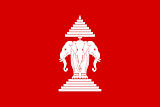
Laos: Operation Hotfoot (ab 1961: Operation White Star): US Army Spezial Forces trainieren geheim Laotische Armee und Hmong in Laos für die Bekämpfung des Pathet Lao, später ausgeweitet auf Bekämpfung der Armee Nordvietnams.
1959-01-25

König Bhumibol enthüllt am Armeetag in Amphoe Don Chedi (ดอนเจดีย์) ein Denkmal für König Naresuan (สมเด็จพระนเรศวรมหาราช, 1555 - 1605), der die Burmesen besiegt hatte. Dort findet jährlich im Januar die Don Chedi Memorial and Red Cross Fair (งานอนุสรณ์ดอนเจดีย์และงานกาชาดสุพรรณบุรี) statt.
Don Chedi Memorial and Red Cross FairDon Chedi Memorial and Red Cross Fair
Abb.: Lage von Amphoe Don Chedi (ดอนเจดีย์)
[Bildquelle: OpenStreetMap. -- Creative Commons Lizenz (Namensnennung, share alike)]
Abb.: Denkmal für König Naresuan (สมเด็จพระนเรศวรมหาราช), Suphanburi (สุพรรณบุรี)
[Bildquelle: Heinrich Damm / Wikipedia. -- GNU FDLicense]
Abb.: Plakat für die Don Chedi Memorial and Red Cross Fair (งานอนุสรณ์ดอนเจดีย์และงานกาชาดสุพรรณบุรี), 2014
[Fair use]
1959-01-25

Sarit Thanarat sagt am Armeetag, dass Thailands Streitkräfte dank Ausbildung durch die USA so gut sind wie die entwickelter Länder.
1959-01-28

ธรรมนูญการปกครองราชอาณาจักร พุทธศักราช 2502 - Charter for the Administration of the Kingdom 1959 (7. Verfassung)
Art: Putsch-Verfassung
In Kraft: 1959-01-28 - 1968-06-20
Dauer: 9 Jahre 4 Monate 23 Tage
aufgehoben: legalArtikel 17 der Verfassung:
ในระหว่างที่ใช้ธรรมนูญนี้ ในกรณีที่นายกรัฐมนตรีเห็นสมควร เพื่อประโยชน์ในการระงับหรือปราบปรามการกระทำอันเป็นการบ่อนทำลายความมั่นคง ของราชอาณาจักรหรือราชบัลลังก์ หรือการกระทำอันเป็นการบ่อนทำลาย ก่อกวน หรือคุกคามความสงบ ที่เกิดขึ้นภายในหรือมาจากภายนอกราชอาณาจักร ให้นายกรัฐมนตรี โดยมติของคณะรัฐมนตรี มีอำนาจสั่งการ หรือกระทำการใด ๆ ได้ และให้ถือว่า คำสั่งหรือการกระทำเช่นว่านั้นเป็นคำสั่งหรือการกระทำที่ชอบด้วยกฎหมาย เมื่อนายกรัฐมนตรีได้สั่งการหรือกระทำการใดไปตามความในวรรคก่อนแล้ว ให้นายกรัฐมนตรีแจ้งให้สภาทราบ
"Pending operation of this Charter, if the Prime Minister finds desirable to prevent or suppress an act giving rise to the subversion of the national security or Throne or an act contributable to the impairment, disturbance or threat against the internal or external peace of the Kingdom, the Prime Minister, upon resolution of the Council of Ministers, shall be bestowed with the power to issue any order or to perform any act whatsoever. Such order or act shall be deemed lawful. Upon issuance of any order or performance of any act in virtue of the foregoing paragraph, the Prime Minister shall inform the Assembly thereof."
[Quelle: https://th.wikisource.org/wiki/ธรรมนูญการปกครองราชอาณาจักร_พุทธศักราช_๒๕๐๒. -- Zugriff am 2015-08-20 ] [Quelle: https://en.wikisource.org/wiki/Translation:Administrative_Charter_of_the_Kingdom,_Buddhist_Era_2502_%281959%29. -- Zugriff am 2015-08-20] Dieser Artikel ist auch Bestandteil der Verfassungen von 1968 und 1972.
1959-01-28
Die neue Sarit-Regierung erklärt ihre Ziele: Vernichtung von Kommunisten, Hooligans, Brandstiftern und anderen.
Aus dem Anti-Communist Decree: "Destruction or Moving of Property Clause 14
1) In times of war or in conflict with royal enemies, the government has the power to burn homes if deemed necessary. If evidence of enemy activity is apparent after the army has retreated, then the power extends to complete destruction.
2) In order to build and maintain stability the military leadership has the power to chart the national territory and re-arrange houses, villages, towns and cities as necessary to fight enemy activity."
[Zitiert in: Chronicle of Thailand : headline news since 1946 / ed. in chief Nicholas Grossman. -- Bangkok : Bangkok Post, 2010. -- ISBN 978-981-4217-12-5.-- S. 103]
1959-02-03
Ernennung (!) einer Nationalversammlung.
Abb.: Zusammensetzung der ernannten Nationalversammlung 1959-02-03
[Datenquelle: Thak (1978), S. 187]
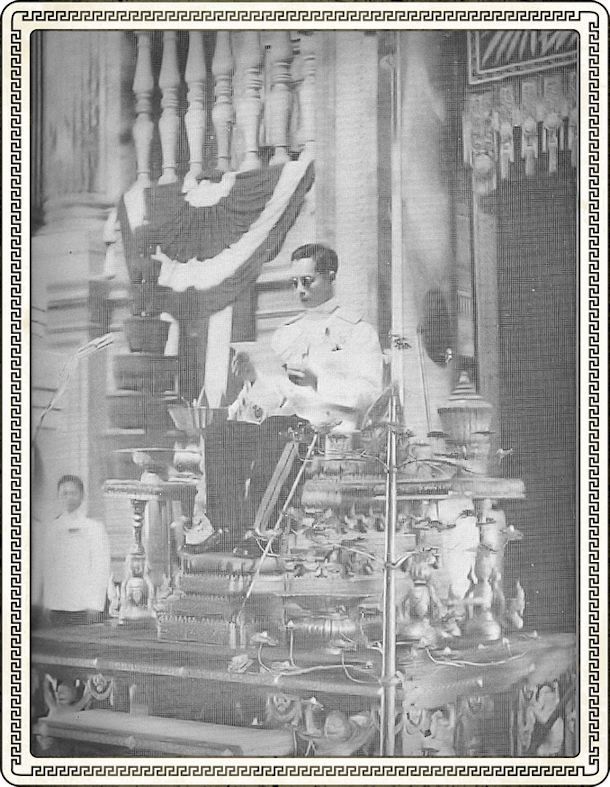
Abb.: Der König eröffnet die Nationalversammlung, o. J.
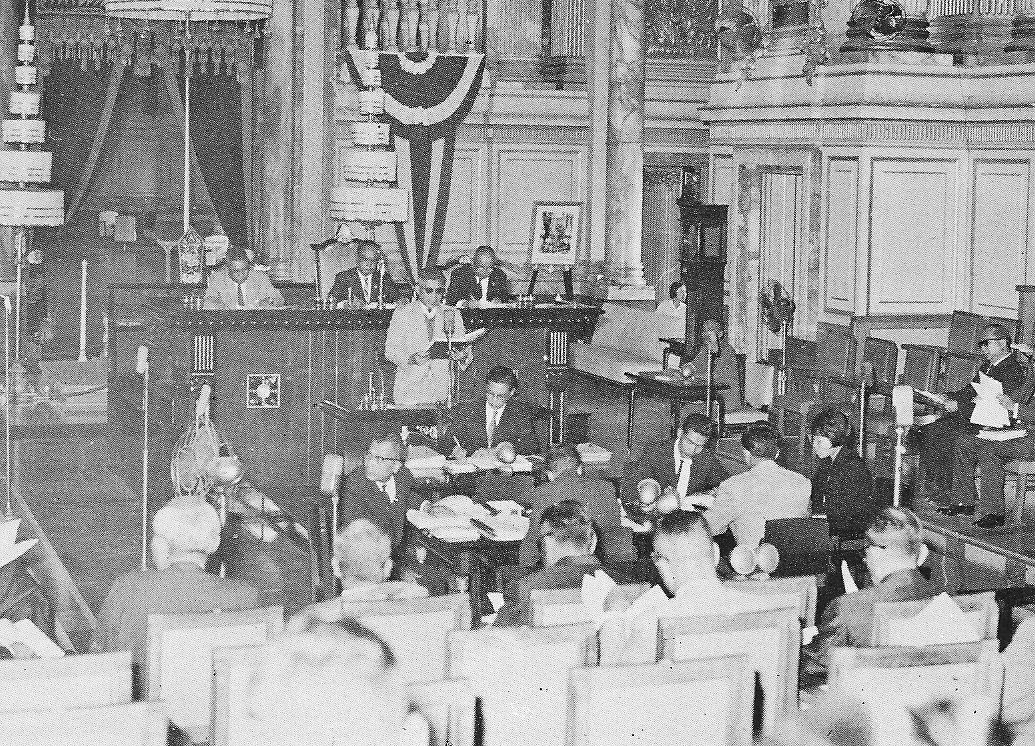
Abb.: Sitzung der Nationalversammlung, o. J.
1959-02-03 - 1959-02-06

SEATO-Übung KITTISENA in Nordthailand.
1959-02-03

Tod von Phra Mongkhonthepmuni (พระมงคลเทพมุนี, geb. 1884), dem Erfinder der Dhammakaya Meditation.
Abb.: Phra Mongkhonthepmuni (พระมงคลเทพมุนี)
[Bildquelle: Wikipedia. -- Public domain]
"Phra Mongkhonthepmuni (Sodh Candasaro; 10 October 1884 – 3 February 1959) (Thai: พระมงคลเทพมุนี (สด จนฺทสโร)), the late abbot of Wat Paknam Bhasicharoen (วัดปากน้ำภาษีเจริญ), was the founder of the Thai Dhammakaya meditation school in 1914. Birth to ordination
Phra Mongkhonthepmuni was born as Sodh Mikaewnoi (สด มีแก้วน้อย) on 10 October 1884 to the family of a rice merchant in Amphoe Song Phi Nong (สองพี่น้อง), Suphanburi (สุพรรณบุรี), a province 100 km to the west of Bangkok. At the beginning of July 1906, aged twenty-two, he was ordained at Wat Songpinong (วัดสองพี่น้อง) in his hometown and was given the Pāli name Candasaro (จนฺทสโร).
Dhamma studiesAs a student, Phra Mongkhonthepmuni was a disciple of two traditions, unlike most of his contemporaries, and studied under masters of the oral meditation tradition as well as experts in scriptural analysis.[1] He started to study meditation on the day following his ordination, and after his first rainy season, travelled far and wide in Thailand in order to study with all the renowned masters of the time.[2]
Dhamma practiceHe later moved to Bangkok to study the Scriptures. He practiced in each school but was not satisfied. In the eleventh year of his ordination, he stayed at Wat Bangkuvieng, Nonthaburi Province (นนทบุรี), during the rainy season. There, he began to practice meditation by himself using the Visuddhimagga.
He reflected to himself that he had been practising meditation for eleven long years and had still not understood the core of knowledge which the Lord Buddha had taught. Thus, on the full-moon day of September 1918, he sat himself down in the main shrine hall of Wat Bangkuvieng, resolving not to waver in his practice of sitting meditation, whatever might seek to disturb his single-mindedness. It is claimed that while meditating far into the night, he allowed his mind to go deeper and deeper through the pathway at centre of the sphere, until he discovered the dhammakāya (ธรรมกาย, dharmakaya), the most refined of the inner bodies, which is eternal and free from defilement.
TeachingPhra Mongkhonthepmuni devoted the rest of his life to teaching and furthering the depth of knowledge of this meditation technique. It is this technique which has come to be known as 'Dhammakaya meditation' (i.e., meditation for attaining the dhammakāya). In 1916, Phramongkolthepmuni was appointed abbot of Wat Paknam Bhasicharoen, and there he devoted his time to researching the insights of Dhammakāya meditation and refined the technique, to make it more systematic, through experimenting with the ways the meditation could best be applied for the common good. During an exceptionally long ministry of over half-a-century, Phramongkolthepmuni was unflagging in teaching all comers the way to attain dhammakaya, with activities nearly every day of the week. He recognised the need to open up and redevelop the oral tradition of meditation teaching, which was becoming disorganised and rare in Thai Buddhism.
He provided the opportunity, with the technique, for meditators to verify for themselves, in their firsthand experience, the success of the technique. Indeed, Phramongkolthepmuni would challenge others to meditate in order that they might verify for themselves the claims which he made about the technique. It was the response to this need which led to the innovative building at Wat Paknam of the 'meditation workshop'. Phramongkolthepmuni declared that this workshop should be kept in use by meditators for twenty-four hours a day, day and night, and selected from amongst his followers the most gifted of the meditators. Their 'brief' was to devote their lives to meditation research for the common good of society.
Phra Mongkhonthepmuni was also the first Thai preceptor to ordain a westerner as a Buddhist monk. He ordained the Englishman William Purfurst (a.k.a. Richard Randall) with the monastic name 'Kapilavaddho Bhikkhu' at Wat Paknam in 1954[3] and Kapilavaddho returned to Britain to found the English Sangha Trust in 1956.[4][5]
DeathPhra Mongkhonthepmuni was taken ill in 1956. He brought the work of the meditation workshop to an end by dismissing all of the meditators except four or five of the most devoted nuns including Chandra Khonnokyoong (จันทร์ ขนนกยูง, 1909 - 2000) and Thongsuk Samdaengpan (1900 - 1963). It was these nuns who were heirs to the oral tradition of Dhammakāya when Phramongkolthepmuni died in 1959, aged seventy-five."
[Quelle: http://en.wikipedia.org/wiki/Phramongkolthepmuni. -- Zugriff am 2012-06-10]
1959-02-06
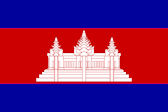
Thailand und Kambodscha nehmen ihre diplomatischen Beziehungen wieder auf und öffnen ihre Grenze.
1959-02-06

Der US-Ingenieur Jack Kilby meldet die integrierte Schaltung (miniaturized electronic circuits, Mikrochip) als Patent an.
1959-02-09 - 1963-12-08
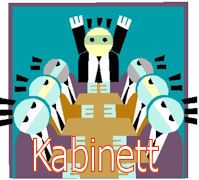
29. Kabinett: Sarit (สฤษดิ์)
1959-02-26

Richard Huges im Wallstreet Journal über eine Opiumhöhle in Bangkok:
"There is no sign on the innocent-looking entrance to the Heng Lak Rung, which has a registered capacity of 8,000 smokers. It nestles next door to an ancient Buddhist temple on the hot, bustling New Road and appears from the street to be only a small
restaurant.
But above the restaurant are four spacious floors, each a crowded maze of partitioned cubicles. In these quiet, poppy-scented labyrinths, customers enjoy an average of 10 pipes apiece nightly at a cost of about 10 baht, or 50 cents - often more than a quarter of a day's wages.
Five thousand coolies use the den as their home - sleeping, eating and bathing on the premises. They leave in the morning for work, return in the evening, gulp a meagre meal, perhaps gamble and talk for a while and then, lulled by a couple of hours of unhurried smoking, fall asleep on the plain wooden floors of their cubicles.
"These unhappy coolies escape from their brutish world over their few pipes here," says a Bangkok doctor, who readily concedes that the practice shortens their lives. "Opium makes them gentler, kinder, happier." He predicts the coolies will turn to heroin with its more violent effects when the ban is enforced."
[Abgedruckt in: Burslem, Chris: Tales of old Bangkok. -- Hong Kong : Earnshaw, 2012. -- ISBN 13-978-988-19984-2-2. -- S. 75. -- Fair use]
1959-03

In einer Rede vor der American Association erklärt Außenminister Thanat Khoman (ถนัด คอมันตร์, 1914 - ), dass die Revolutionsregierung "took great pains to show its loyalty and reverence" to the King. "If we look back at our national history, we can very well see that this country works better, and prospers, under an authority. Not a tyrannical authority, but a unifying authority around which all elements of the nation can rally." [Zitiert in: Chronicle of Thailand : headline news since 1946 / ed. in chief Nicholas Grossman. -- Bangkok : Bangkok Post, 2010. -- ISBN 978-981-4217-12-5.-- S. 103]
Abb.: Thanat Khoman - ถนัด คอมันตร์
[Bildquelle: th.Wikipedia. -- Public domain]
"Thanat Khoman (auch Thanad; Thai ถนัด คอมันตร์; * 9. Februar 1914 in Bangkok) ist ein ehemaliger thailändischer Politiker; er war von 1959 bis 1971 Außenminister. Thanat stammt von einer thai-chinesischen Familie ab. Er studierte in Frankreich die Rechte und trat 1940 in den diplomatischen Dienst von Thailand ein. Zunächst war er während des Zweiten Weltkriegs in Tokio stationiert, schloss sich dann nach seiner Rückkehr nach Thailand dem organisierten Widerstand gegen die japanische Besatzung an. In diesem Zusammenhang war er Mitglied einer Geheimdelegation im Februar 1945 nach Ceylon, wo sich das Hauptquartier des Allied South-East Asia Command befand.
Nach dem Zweiten Weltkrieg hatte er zahlreiche diplomatische Posten inne und stieg 1957 zum Botschafter in den USA auf. Am 10. Februar 1959 wurde er zum Außenminister Thailands in die Regierung von Premierminister Sarit Dhanarajatas berufen. Diese Zeit war von extrem repressiven Maßnahmen der Militärregierung geprägt, die Demokratie und freie Rede für gefährlich und nicht im Einklang mit der Haltung des thailändischen Volkes ansah. Thanat sagte unter anderem[1]:
„Wir befinden uns heute an einer Weichenstellung, wir müssen genau in uns hineinschauen und wir müssen wissen, wer wir sind, was wir wollen und was wir können ... es hat keinen Sinn, diejenigen nachzuäffen, die trotz allem von uns in vielen Gesichtspunkten verschieden sind. Für viele von uns liegt der eigentliche Grund [für die Instabilität zahlreicher Regierungen Thailands] in der plötzlichen Verpflanzung fremder Institutionen auf unseren Boden ohne sorgfältige Vorbereitung und besonders ohne die Umstände unseres Heimatlandes, die Natur und Eigenschaften unseres Volkes, mit einem Wort den Genius unserer Rasse, in Betracht zu ziehen, mit dem Resultat, dass ihre Wirkungsweise planlos, ja chaotisch ist.
Wie kann eine repräsentative Regierung funktionieren, wenn diejenigen, die als Repräsentanten des Volkes in der Nationalversammlung gewählt sind, die Interessen des gesamten Landes vergessen und nur ihre eigensüchtigen Interessen verfolgen. Darüber hinaus, wie können die Wähler hoffen, ihres Vertrauens würdige Vertreter zu wählen, wenn sie kaum in der Lage sind, zwischen Wahlversprechen und den eigentlichen politischen Programmen zu unterscheiden.“Sein wesentlicher Beitrag war in der Förderung regionaler Versöhnung und Zusammenarbeit.
Thanat spielte Mitte der Sechziger Jahre eine Schlüsselrolle bei der Vermittlung zwischen Indonesien und Malaysia. Die Wahl Bangkoks als Gründungsort für ASEAN (Association of South-East Asian Nations) im August 1967 war ein Ausdruck des Respekts für seine aktive Rolle bei der Bildung dieser Institution. Am 17. November 1971 musste er nach einem Staatsstreich zurücktreten, wohl auch weil er beabsichtigte, Thailand dem kommunistischen China anzunähern.
Nach seinem Rücktritt als Außenminister trat Thanat in die Landespolitik ein und wurde 1979 Vorsitzender der Demokratischen Partei (bis 1982). Zwischen 1980 und 1982 war er gleichzeitig stellvertretender Premierminister. 1982 zog er sich aus dem politischen Leben zurück.
EinzelnachweiseLiteratur
- The Bangkok Post, 10. März 1959, als Zitat von Thanats Ansprache bei der American Association of Thailand mit dem Titel "Eine neue Ära für Thailand"
- Michael Leifer: Dictionary of the modern politics of South-East Asia. London: Routledge 1996. ISBN 0-415-13821-3. Artikel: "Thanat Khoman"."
[Quelle: http://de.wikipedia.org/wiki/Thanat_Khoman. -- Zugriff am 2011-11-06]
1959-03
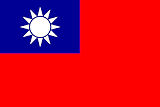
Bangkok: Kukrit Pramoj (คึกฤทธิ์ ปราโมช, 1911 - 1995) organisiert ein Treffen von drei jungen Shan-Separatisten [တႆး] mit SEATO-Generalsekretär Pote Sarasin (พจน์ สารสิน, 1905 - 2000). Das Treffen verläuft ergenislos.
1959-03-02 - 1959-03-08

SEATO-Übung AIR PROGRESS in Thailand.
1959-03-08

Luftschau der SEATO in Don Muang (ดอนเมือง). Thailand, USA, Commonwealth Staaten und Frankreich demonstrieren ihre Luftwaffe. Über 10.000 Personen schauen das schaurige Spektakel an.
Abb.: Lage des Flughafens Don Muang (ท่าอากาศยานดอนเมือง)
[Bildquelle: OpenStreetMap. -- Creative Commons Lizenz (Namensnennung, share alike)]
1959-03-09

Die erste Barbie-Puppe kommt auf den US-Markt.
Abb.: Imitate, Chiang Rai, 2009
[Bildquelle: Nir Nußbaum. -- http://www.flickr.com/photos/36430378@N08/3396553108. -- Zugriff am 2013-08-24. -- Creative Commons Lizenz (Namensnennung, keine kommerzielle Nutzung, keine Bearbeitung)]
1959-03-10


Beginn des Aufstands in Lhasa (Tibet). Flucht des Dalai Lama nach Indien.
Abb.: Lage von Tibet
[Bildquelle: CIA. -- Public domain]
1959-04-02

The Wall Street Journal über das angebliche südvietnamesische Wunder:
".. . the accomplishment, so far, rests on American aid. Without that aid there would be no Vietnam!" [Zitiert in: Vietnam and America : a documented history / [edited] by Marvin E. Gettleman [and others]. -- rev. and enlarged 2. ed. -- New York : Grove Press, 1995. -- 560 S. ; 25 cm. -- ISBN 0-8021-3362-2. -- S. 147. -- Fair use]
1959-04-04

In Nakhon Sawan (นครสวรรค์) wird eine Berufsfachschule eröffnet. Zum Curriculum gehören Mechanik, Konstruktion, Autofahren, Handarbeit und Haushalt. Einen Monat später werden 17 Mittelschulen in Lehrwerkstätten umgewandelt. Das Ganze ist ein von der SEATO finanziertes Projekt.
Abb.: Lage von Nakhon Sawan (นครสวรรค์)
[Bildquelle: OpenStreetMap. -- Creative Commons Lizenz (Namensnennung, share alike)]
1959-04-13
Gründung des Board of Investment (สำนักงานคณะกรรมการส่งเสริมการลงทุน), um die Industrialisierung Thailands voranzutreiben.
Abb.: ®Logo
1959-04-22 - 1961-01-20

Christian Herter (1895 - 1966) ist US Secretary of State (Außenminister).
Abb.: Christian Herter
[Bildquelle: Wikipedia. -- Public domain]
1959-04-27 - 1968-10-31

Mao Zedong tritt als Vorsitzender der Volksrepublik China zurück. Sein Nachfolger wird Liu Shaoqi ( 刘少奇, 1898 - 1969).
Abb.: Liu Shaoqi ( 刘少奇)
[Bildquelle: Wikipedia. -- Public domain]
1959-05-04
Bangkok World über den Musiker Luang Pradit Pairoh (หลวงประดิษฐไพเราะ / Sorn Silpanleng - ศร ศิลปบรรเลง, , 1881 - 1954)
"When his services with the King ended Luang Pradit [หลวงประดิษฐไพเราะ / Sorn Silpanleng - ศร ศิลปบรรเลง, , 1881 - 1954] established himself with his family in the rambling old house behind which his son has now built his theater. There the gentle, almost ethereal musician received students from all over the country; young men and women who, bearing a gift of rice or fruit, came to sit at his feet and study his technique. The old man received no pay from his students, but kept up his school and his family with offerings presented at funerals, weddings, tamboons [ทำบุญ
- Verdienst-tun] and other ceremonies at which his troupe of young people played or danced.We happened to be visiting him years ago, when a young man with no more baggage than the shorts and shirt he wore, the pakaoma [ผ้าขาวม้า] in which he carried his gift of rice and the flute he carried in his hand, arrived to offer himself as a student. The old man received the gift and acknowledged the youth’s obeisance absently and motioned him without a word to take his place among the other students practicing on the porch. It was understood that the boy would eat at the family kitchen and find a place to sleep somewhere on the compound with the others."
[Zitiert in: Morton, David <1920 - 2004>: The traditional Music of Thailand. -- Berkeley : University of California Press, 1976. -- 258 S. : Ill. ; 29 cm. -- ISBN 0-520-01876-1. -- S. 16]
1959-05-04
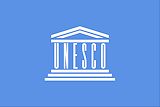
Internes UNESCO-Memorandum:
Klausner, William <1929 - >: A memorandum on Ministry of Interior community development pilot projects. -- Bangkok, 1959-05-04
"These FEOs [Fundamental Education Organizers at present under Ministry of Education’s supervision have found their position very difficult to maintain. In quite a few areas they have not been able to enlist the Governor’s and other officials’ support. . . . Vis-à-vis the villagers, the FEOs have no real status especially if viewed against the prestige of those Ministry of Interior officials from the Governor down. . . . The FEOs are not in the line of authority that the headman has been subject to. The Ministry of Interior officials are the ones who have the power, respect of the villagers and a long history of contact with them. It is they who are responsible for the administration and the development of rural areas." [Zitiert in: Nairn, Ronald C.: International aid to Thailand: the new colonialism?. -- New Haven : Yale University Press, 1966. -- 228 S. ; 22 cm. -- (Yale studies in political science ; 19). -- S. 112. -- Fair use]
1959-05-14


Frankreich: Tod des Jazz-Sopransaxophonisten und Klarinettisten Sidney Bechet (geb. 1897). Er ist ein Favorit und Vorbild des Saxophonspielers König Bhumibol.
Künstlerlink auf Spotify:
URI: spotify:artist:1RsmXc1ZqW3WBs9iwxiSwk
URL: https://open.spotify.com/artist/1RsmXc1ZqW3WBs9iwxiSwk
Abb.: Sidney Bechet, 1947-06 / von William P. Gottlieb (1917–2006)
[Bildquelle: LoC / Wikimedia. -- Public domain]
1959-05-16

Eröffnung der Berufsschule Thai-German Technical School (später: Thai-German Technical Institute - TGTI, heute: King Mongkut's University of Technology North Bangkok (KMUTNB) - มหาวิทยาลัยเทคโนโลยีพระจอมเกล้าพระนครเหนือ). Es wird bis 1969 durch die Bundesrepublik Deutschland gefördert.
Abb.: Lage des Thai-German Technical Institute
[Bildquelle: OpenStreetMap. -- Creative Commons Lizenz (Namensnennung, share alike)]
"King Mongkut's University of Technology North Bangkok (KMUTNB) (Thai มหาวิทยาลัยเทคโนโลยีพระจอมเกล้าพระนครเหนือ) ist eine öffentliche Universität in Thailand. Sie unterhält drei Campus - einen in Nord-Bangkok [1], einen in der Provinz Prachinburi[2] und einen in der Provinz Rayong (Campus befindet sich im Bau)[3]. Geschichte
- Die Institution wurde 1959 als Kooperation zwischen der thailändischen Regierung und der Bundesrepublik Deutschland gegründet als „Thai-German Technical School“.
- 1964 wurde die Schule zum „North Bangkok Technical College" hochgestuft.
- 1971 ging das College zusammen mit dem Thonburi Technical College und dem Telecommunication College Nonthaburi zusammen. Die neue Institution bildete den Campus des „King Mongkut's Institute of Technology“ in Nord-Bangkok.
- 1974 wurden drei neue Fakultäten etabliert
- 1986 spaltete sich das King Mongkut's Institute of Technology auf in drei autonome Universitäten.
- King Mongkut’s Institute of Technology Lat Krabang
- King Mongkut’s Institute of Technology Thonburi
- King Mongkut’s Institute of Technology North Bangkok
- 1995 erwarb das KMITNB Land in der Provinz Prachinburi für einen neuen Campus, „KMITNB Prachinburi“.
- 2007 wurde das Institut in den Rang einer Universität hochgestuft. Der Name wurde dabei geändert zu „King Mongkut's University of Technology North Bangkok“ (KMUTNB). [4]"
[Quelle: http://de.wikipedia.org/wiki/King_Mongkut%E2%80%99s_University_of_Technology_North_Bangkok. -- Zugriff am 2012-03-15]
"THE GERMAN JUNIOR TECHNICAL INSTITUTE
Government and international aid processes cannot often be reduced to the simplicity of straightforward business operations. In many instances the difficulties of institution-building at national levels or integration within existing national institutions will remain, and the operations themselves will encompass greater complexity of purpose and action and more widespread involvement. A German Junior Technical Institute, however, was one project which came close to the objective of building a national institution. It shows promise of success in its role and is therefore worthy of study.
In 1959 the German government established a technical training school in Thailand, working within the Ministry of Education. The purpose of the school was to train Thai youth in engineering skills to about the same level as would be held by a German technician who had undertaken apprenticeship in the engineering trade.
The school is small with a total student body of 250 boys who undertake either a three-year or five-year course. The annual output is about fifty boys, and so far the unofficial policy has been to assume responsibility for placing all graduates in employment with foreign firms or the Thai government. The school has stated unequivocally that it would never train more students than it was certain Thai industry could absorb.
The equipment in the school is outstanding. The private German firms supplying it obtain special taxation exemptions from the German government, and the USOM [United States Operations Mission] Vocational Training Officer stated categorically that such an investment in training machinery would be “too expensive for the United States government to emulate in an aid mission.” The enterprise is German-controlled, and all instruction until very recently was given solely by Germans. At the present time some Thai educators are being employed as instructors in aspects of theory. The ultimate plan is that the school will become solely Thai; but, as was stated quite definitely by German teachers, there was no hurry about this changeover. Germans were prepared to stay as long as necessary, “even into the next generation if we are needed and wanted.”
Initially there was some difficulty in encouraging pupils to attend. In 1962, however, after three years of operation, some 1,000 applicants competed for 100 places. The Thai government has now asked the German government to duplicate the entire school at Khon Kaen [ขอนแก่น], a provincial town in the northeast plateau, which is also to be the locale for the new Khon Kaen Institute of Technology [สถาบันเทคโนโลยีขอนแก่น].
By whatever yardstick is used, the German school is an extraordinarily smooth-running, efficient venture. It has already made its mark in the area that matters most—that is, it now has an ex-student body actually operating within Thai industry, rather than a disillusioned coterie of misemployed smarting under unfulfilled promises. To date relations with the Thai government and the Ministry of Education seem good, in that the school has been accorded the unusual honor of being asked to expand its activity.
The school has had its problems, of course, most of them connected with German personnel. The first director was sent home because “he could not get along with the Thai.” Unfortunate as this may have been, such a condition is far from uncommon, and the real test is whether such poor relations can be detected by the foreign authority and appropriate action taken. The school also found it difficult to persuade its German instructors with families to stay for more than two years because a German language school for their children was not available in Bangkok.
The biggest single problem has been language, and the current director felt strongly that in the future all instructors should take one year of language training before coming to Thailand. By and large, the language problem was more complicated than in the United Nations, since English was the school’s only lingua franca. Book translation, for example, had to be in a German-English-Thai cycle. In general, however, it seemed that these more or less unavoidable stresses were fairly easily absorbed by the school, and there was certainly no impression that operations were being hampered in any appreciable degree. In particular it was noticeable that the turnover of instructors had small effect on the school program.
This seemingly smooth operation did not just happen. The German school is an autonomous institution with a modus operandi that is relatively stable and well known to all participants. The critical element is that the operation is based upon the use of machines that remain essentially unchanged, give continuity relative to operations, and demand certain fixed levels of knowledge which the German instructors have in full measure. Allied with this, institutional autonomy gives a skilled management not only day-to-day control over operations and personnel but also control over policy and the maintenance of continuity in policy and policy-making. The school does not betray that readily observable un-sureness of where it is going, so marked in TUFEC [Thailand and UNESCO Fundamental Education Center]. Neither does the “change of jockey” give rise to changes of direction in this machine-dominated operation. Equally striking is the absence of bureaucratic control and interference. The local German executives seem to have the autonomy normally associated with, say, a private business or private college in the United States. This was evident in the freedom, speed, and ease with which programs were adjusted to meet indigenous needs.
Above all, the operation of the school as a whole is related to the present needs of the Thai economy. It does not exceed demands or even seek at this time to stimulate them but merely to satisfy them, and perhaps provide concepts that might be emulated. A highly particularistic operation, it is also an exceedingly simple one not only in what it does in the Thai milieu but also in how it goes about its daily tasks. Its activity is not cluttered with theories of social and cultural change.
The German school is an example of autonomous institution-building within the Thai bureaucratic structure, is concerned with simple technical operations and is based upon the machine. A legitimate question, however, is how far can operations of this type be extended. At what stage, for example, does the relatively simple machine-dominated operation have to confront indigenous cultural or economic values which may conflict, or how far can an alien institution, even when highly successful, intrude into indigenous structures? The director of the school himself expressed doubts as to how far operations could expand. A very large-scale, effective, autonomous German operation (which, incidentally, is not contemplated) could hardly be assimilated by Thailand without undue German influence being applied at many levels, especially on the level of industrial development. On the other hand, small autonomous operations tend to exert small influence beyond their own fairly limited spheres. The director commented that already his small school “was like an alien island” within the Thai educational structure, and he was unsure if the school’s influence extended very far beyond its annual output of pupils. If it were to extend its influence, at some time it would have to embark on a process of diffusion, like the original goal of the Pilot Project at Cha Cheong Sao. But the idea of German skills being integrated within the Thai educational structure en masse seemed to appall all six specialists at the German school. They felt there was insufficient demand for engineering capabilities in Thailand to prompt major growth, although they conceded that in a generation or two things might change. And would the output of the German school help bring these changes about? This “is something that is beyond the purview of this generation.” To the German staff at the Institute the idea of creating a pilot project for an alien type of education and diffusing it over the entire educational system of the kingdom—all within, say, a period of ten years—seemed hardly worthy of discussion.
Insofar as one relatively small operation can be taken as an example, the German Institute highlights two important points. It illustrates the assets of institution-building but also the weaknesses of an alien enterprise which, no matter how successfully it functions, is limited in how far it can extend its operations and influence. At some stage the nation itself must pick up the ball and run."
[Quelle: Nairn, Ronald C.: International aid to Thailand: the new colonialism?. -- New Haven : Yale University Press, 1966. -- 228 S. ; 22 cm. -- (Yale studies in political science ; 19). -- S. 139ff. -- Fair use]
1959-05-19

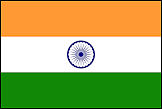
Die thailändische Buddhist Association beginnt, Reis für tibetische Flüchtlinge nach Indien zu senden. Ein ungenannter Wohltäter hat dafür 100.000 Baht zur Verfügung gestellt.
1959-05-19


69. Geburtstag von Ho Chi Minh (1890 - 1969): offizieller Beginn des Baus der Ho Chi Minh Pfade
Abb.: Lage der Ho Chi Minh Pfade, 1967
[Bildquelle: USAF / Wikimedia. -- Public domain]
"Der Ho-Chi-Minh-Pfad (Đường mòn Hồ Chí Minh) war ein logistisches Netz aus Straßen und Verkehrswegsystemen, das von Nordvietnam nach Südvietnam reichte und zum Teil durch die Nachbarländer Laos und Kambodscha führte. Bereits im Indochinakrieg wurde der Pfad benutzt. Der Pfad diente auch während des Vietnamkriegs als logistische Unterstützung des Nordens für die im Süden kämpfende Nationale Front für die Befreiung Südvietnams. Der Pfad wurde nach dem nordvietnamesischen Präsidenten Hồ Chí Minh benannt. Die Bezeichnung war jedoch nur im Westen gebräuchlich, in Vietnam wurde der Pfad als Đường Trường Sơn (Truong-Son-Straße) bezeichnet, benannt nach der Gebirgskette Truong Son in Zentralvietnam.
Die Straßen waren unterschiedlich ausgebaut, von größeren mit LKW befahrbaren Straßen bis zu kleinen Fuß- und Radwegen. Über den Pfad wurden täglich mehrere hundert Tonnen Material geschleust, trotz zahlreicher verheerender Luftangriffe durch US-Kampfflugzeuge (Operation Rolling Thunder). Um den Angriffen auszuweichen, wurde der dezentral gebaute Pfad stärker in die Nachbarländer Laos und Kambodscha verlagert, die sich offiziell neutral zu dem Konflikt in Vietnam verhielten.
Dies hinderte die Vereinigten Staaten daran, den Pfad mit Bodentruppen zu attackieren. Dennoch starteten die USA am 11. November 1968 die Operation Commando Hunt, bei der mit Hilfe von Bombardierungen des neutralen Laos, vor allem im Bolaven-Plateau, versucht wurde, das Straßennetz zu zerstören. Jedoch scheiterte das Vorhaben und es gelang nicht, den Transport im größeren Maße zu behindern oder gar komplett zu stoppen, da der Pfad weitverzweigt und von der Vegetation verdeckt war und beschädigte Abschnitte leicht zu umgehen waren.
Um die Wege des Ho-Chi-Minh-Pfades bei Luftoperationen erkennen zu können, wurden die entsprechenden Regionen zur Entlaubung der Vegetation aus der Luft mit Agent Orange besprüht."
[Quelle: https://de.wikipedia.org/wiki/Ho-Chi-Minh-Pfad. -- Zugriff am 2016-09-23]
1959-05-26
In Bangkok werden Fahrradrikschas (samlor - สามล้อ) verboten. 15.000 Rikschafahrer, vorwiegend aus dem Nordosten, verlieren dadurch ihren Lebensunterhalt. Die Regierung zahlt ihnen die Bahnreise heim in den Nordosten. Motor-Dreiräder (motor-samlor) bleiben erlaubt.
Abb.: Samlor-Fahrer, Chiang Mai (เชียงใหม่), 2007
[Bildquelle: Akuppa John Wigham. -- http://www.flickr.com/photos/90664717@N00/416351387/. -- Zugriff am 2011-11-06. -- Creative Commons Lizenz (Namensnennung)]
1959-06
Bildung des Central Tribal Welfare Committee.
1959-06-01
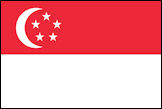
Die britische Kronkolonie Singapur bekommt beschränkte Autonomie innerhalb des Commonwealth. Außenpolitik und Verteidigung bleiben Großbritannien vorbehalten.
Abb.: Lage von Singapur
[Bildquelle: OpenStreetMap. -- Creative Commons Lizenz (Namensnennung, share alike)]
1959-06-03 - 1990-11-28

Lee Kuan Yew (李光耀 / லீ குவான் இயூ, 1923 - 2015) ist Ministerpräsident Singapurs.
Abb.: DVD-Titel
[Fair use]
1959-06-03

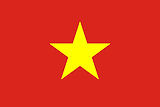
Hanoi (Nordvietnam): Treffen zwischen kommunistischen Kadern von Laos und Nordvietnam: es wird die Abwendung vom politischen hin zum bewaffneten Kampf beschlossen. Nordvietnam rüstet und bildet die Truppen des Pathet Lao (ປະເທດລາວ) aus.
1959-06-08 - 1959-06-18

Taunggyi (ဝဵင်းတွင်ႇၵျီး , Burma): Treffen von Vertretern der Shan-Staaten (မိူင်းတႆး). Sie wollen ein föderalistisches System, um die ethischen Probleme Burmas zu lösen.
Abb.: Lage von Taunggyi (ဝဵင်းတွင်ႇၵျီး )
[Bildquelle: OpenStreetMap. -- Creative Commons Lizenz (Namensnennung, share alike)]
1959-06-18
Dr. Chang Ratanarat, Generaldirektor des Science Departement, empfiehlt die Kastration von Vergewaltigern, Epileptikern, Leprakranken, Hooligans und bestimmten Erbkranken.
1959-06-24
Einweihung der Krungthep Brücke (สะพานกรุงเทพ) und der Nonthaburi Brücke (สะพานนนทบุรี) über den Chao Phraya (แม่น้ำเจ้าพระยา).
Abb.: Lage der Krungthep Bridge (สะพานกรุงเทพ)
[Bildquelle: OpenStreetMap. -- Creative Commons Lizenz (Namensnennung, share alike)]
Abb.: Krungthep Bridge - สะพานกรุงเทพ
[Bildquelle: Srirath / Wikipedia. -- GNU FDLicense]
"Die Krungthep-Brücke (Thai: สะพานกรุงเทพ, Aussprache: [sà.pʰaːn kruŋ.tʰêːp], Deutsch: Bangkok-Brücke) ist eine Klappbrücke über den Fluss Chao Phraya vom Khet (Bezirk) Thonburi zum Khet Bang Kho Laem in Bangkok, Thailand. Der Bau der Krungthep-Brücke wurde am 31. Oktober 1954 begonnen und am 24. März 1959 abgeschlossen; die offizielle Eröffnung erfolgte am 25. Juni 1959. Sie ist damit die zweite Brücke über den Chao Phraya in Bangkok und kostete rund 31 Millionen Baht. Vier Fahrbahnen und ein Fußgängerübergang können benutzt werden. Die Länge über alles liegt bei etwas mehr als 626 Metern, die längste Spannweite ist 64 Meter bei einer maximalen Tiefe von 7,5 Metern.
Häufige Verkehrsstaus führten zum Bau der unmittelbar benachbarten Rama-III.-Brücke, die 1999 eröffnet worden ist."
[Quelle: http://de.wikipedia.org/wiki/Krungthep-Br%C3%BCcke. -- Zugriff am 2011-11-06]
Abb.: Lage der Nonthaburi Bridge (สะพานนนทบุรี)
[Bildquelle: OpenStreetMap. -- Creative Commons Lizenz (Namensnennung, share alike)]
1959-06-26
Gemäß Artikel 17 der vorläufigen Verfassung wird der Phi Bun (ผีบุญ, messianische Führer) Sila Wongsin aus Ubon Ratchathani (อุบลราชธานี) hingerichtet. Es hatte in Tambon Saraphi (สารภี) Nakhon Ratchasima (นครราชสีมา) ein Dorf als sein "Königreich" gegründet. Als ein Distriktbeamter ins Dorf wollte, um Sila zu befragen, wurde er und vier seiner Begleiter getötet. Sila sagte seinen Anhängern, dass ihnen nichts passieren könne, da sie unverwundbar seien. Die Polizei tötete darauf im Dorf 11 Anhänger Sila's und verhaftete 88 weitere. Sila gelang es mit 8 Anhängern zu entfliehen, er wurde aber an der laotischen Grenze gefangen genommen. Ministerpräsident Sarit verhörte ihn persönlich und ordnete seine öffentliche Hinrichtung in Nakhon Ratchasima an.
Abb.: Lage von Tambon Saraphi [ตำบล สารภี]
[Bildquelle: OpenStreetMap. -- Creative Commons Lizenz (Namensnennung, share alike)]
"Der wohl blutigste Zusammenstoß zwischen der etablierten staatlichen Ordnung und traditionalistischen religiös-politischen Bewegungen seit 1902 ereignete sich im Juni 1959 im Distrikt Saraphi [ตำบล สารภี], Provinz Nakhon Rachasima, in Nordost-Thailand. Damals gab sich der Anführer einer 200köpfigen Kultgruppe, der sich als "Phu Wiset" [ผู้วิเศษ] und "Phi-Bun" [ผีบุญ] verehren ließ und wegen angeblich magischer Fähigkeiten gefürchtet war, als Reinkarnation von Rama VIII (Ananda Mahidon [อานันทมหิดล, 1925 - 1946]) aus. Die Kultgruppe bestand aus rund 70 erwachsenen Männern und 50 Frauen sowie vielen Kindern, die mit drei Lastwagen aus der Provinz Ubon Rachathani [อุบลราชธานี] ausgewandert waren. Reichlich mit Geld und Proviant ausgerüstet, bauten sie einige hundert Meter von einer Ansiedlung entfernt ein Lager auf, das aus einem großen Gebäude im Zentrum und darum liegenden kleineren Häusern sowie vier Ausfahrten bestand, die Tag und Nacht durch vier Wächter besetzt waren. Jedem, der nicht der Gruppe angehörte und sich der Ansiedlung näherte, wurde mit Gewalttätigkeiten gedroht. Der Anführer soll die Mönche in der Nachbarschaft mit Verachtung betrachtet und behauptet haben, er habe seine eigene Religion. Der religiöse Kult dieser Gruppe soll angeblich mit dem ausgegrabenen Torso eines Götterstandbildes in Verbindung gestanden haben. Sila Wongsin, etwa 50 Jahre alt und verheiratet, kleidete sich schwarz und stand in dem Ruf, Fieber heilen zu können, als Medium zu wirken und über die geheime Wissenschaft von der Magie und der Unverwundbarkeit zu verfügen. Aus seinem Verhalten schloss der Dorfälteste der nahegelegenen Ansiedlung, dass der Anführer sich als Herrscher betrachtete und das Gebiet als unabhängiges souveränes Land ansah, und dass es die Politik des selbsternannten Königs sei, in Kürze die Hauptstadt zu besetzen. Einer anderen Darstellung zufolge glaubten die Mitglieder der Kultgruppe, ein "Phu-mi-Bun" [ผู้มีบุญ] werde bald kommen und die Hauptstadt übernehmen. Als die thailändischen Lokalbehörden einschreiten wollten und dem Anführer das Verbrechen des Aufruhrs vorwarfen, soll Sila Wongsin gerufen haben: "Auf, wir müssen sie töten! Sie haben meine königliche Macht missachtet! " Die Kult-Gruppe scheute nicht davor zurück, mehrere Beamte zu ermorden und den daraufhin eingesetzten Polizei-Einheiten bewaffneten Widerstand entgegenzusetzen, wobei sie schwere Verluste hinnehmen musste und schließlich in die Flucht geschlagen wurde. Der Anführer wurde später beim überschreiten der Grenze nach Laos gefasst und hingerichtet." [Quelle: Skrobanek, Walter <1941 - 2006>: Buddhistische Politik in Thailand : mit besonderer Berücksichtigung des heterodoxen Messianismus. -- Wiesbaden : Steiner, 1976. -- 315 S. ; 24 cm. -- (Beiträge zur Südasienforschung ; 23). -- ISBN 3-515-02390-9. -- Zugl.: Heidelberg, Univ., Diss., 1972. -- S. 98f.. -- Mit Erlaubnis des inzwischen verstorbenen Autors]
1959-06-26


Der Industrieminister unterzeichnet Abkommen mit den Pharmafirmen Merck, Sharp & Dohme (MSD) (USA) und Dumex (Dänemerk) über die Errichtung von Arzneimittelfabriken in Thailand für den einheimischen Markt. Dies ist Teil der Industrialisierungspolitik.

Abb.: ©Logo
1959-07-01
Verbot des Opium-Rauchens. Opium rauchen war bisher in ganz Thailand legal. In Bangkok gab es ca. 90 legale Opium-Höllen, im übrigen Thailand über 1000. Opium Raucher weichen nach dem Verbot auf Boote auf dem Chao Phraya aus oder besorgen sich Opium aus Laos.
1959-07-06
Der Kommunist und Arbeiterführer Supachai Srisati (ศุภชัย ศรีสติ) wird hingerichtet. Ministerpräsident Sarit sagt, dass die Kommunisten buddhistische Kreise infiltrieren, um Buddhismus und Monarchie zu zerstören.
Abb.: Supachai Srisati - ศุภชัย ศรีสติ
[Fair use]
1959-07-23
Long Beach (Kalifornien, USA): Sondi Sodsai (Sodsai Pantoonkomol - สดใส พันธุมโกมล, 1934 - ), die Repräsentation Thailands bei den Miss Universe Wahlen, wird zur Miss Popularity gewählt. Sondi studiert Theaterwissenschaften in Kalifornien.
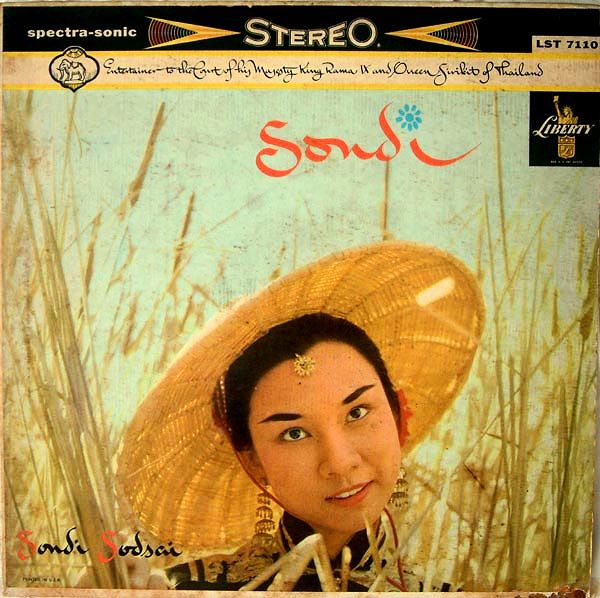
Abb.:
Plattentitel
[Fair use]
|
"Sodsai Pantoomkomol (Thai: สดใส พันธุมโกมล, pronounced [sòt.sǎj pʰān.tʰūm.kōː.mōn]) née Vanijvadhana (วานิชวัฒนา, [wāː.nít.wáttʰanāː]; born 18 March 1934 in Bangkok, Thailand) is a Thai actress and teacher of dramatic arts. Also known as Sondi Sodsai from her acting career in the United States during her studies, she returned to Thailand to become a lecturer and associate professor at the Faculty of Arts of Chulalongkorn University (จุฬาลงกรณ์มหาวิทยาลัย), where she founded the Dramatic Arts Department, the first such school in the country. She produced numerous theatrical works throughout her career, and was named National Artist (ศิลปินแห่งชาติ) in 2011. BiographySodsai Vanijvadhana was born on 18 March 1934 in Bangkok, Thailand to Subhajaya Vanijvadhana, professor and head of the Biology Department at Chulalongkorn University, and Prayongsi Vanijvadhana (née Laksanasut). She graduated Bachelor of Arts with honors from Chulalongkorn University, and subsequently received a Fulbright scholarship to study teaching English as a foreign language in the United States. However, with encouragement from her advisor Prince Prem Purachatra, she asked to study dramatic arts instead. She enrolled at the University of North Carolina at Chapel Hill, where she caught up on drama courses including acting, directing and playwriting. She was often selected for leading parts in plays, from which she became noticed, and was subsequently invited to appear on The Tonight Show, received a record offer with Liberty Records, which was released as Sondi, and appeared in Mickey Spillane's Mike Hammer. She transferred to the University of California, Los Angeles upon the suggestion of her advisers, to be able to pursue more career opportunities. She was then offered a seven-year contract with Fox Studios, which she declined, settling for a two-year scholarship and training program instead.[1] During her acting career in Hollywood she was a semi-regular on ABC's Adventures in Paradise, with Gardner McKay, and also guest starred on CBS's The Lucy–Desi Comedy Hour. She represented Thailand in the Miss Universe 1959 beauty pageant, where she won the Miss Friendship Award.[2] She went by the alias "Sondi Sodsai" in her acting career because her last name "was too difficult for foreigners to pronounce."[1][3] Upon completing her studies, Sodsai returned to Thailand and became a lecturer at her alma mater, Chulalongkorn University's Faculty of Arts. At the time, formal education in dramatic arts did not exist in Thailand. Sodsai pioneered the field, establishing the Faculty's Department of Dramatic Arts in 1970. She developed curricula based on the theories and practices of Western theater, and helped lay out the foundations of drama education in both tertiary and secondary institutions, as well as in professional circles. Of the initial difficulties of establishing the school, she noted in an interview of how she and her students lacked a theater in which to perform: "We were like nomads, we performed under the trees, on the verandah, in the attic. Practically wherever they allowed us."[1][3] Sodsai produced many works, writing and directing numerous plays, as well as editing, acting and composing. Her plays include Yankee Don't Go Home, Tukkata Kaew ("Glass doll"), Yot Pratthana ("Dearest"), Koet Pen Tua Lakhon ("Born a play character"), Phu Phae–Phu Chana ("Loser–winner"), Phrai Nam, Khon Di Thi Sechuan ("Samaritan at Sichuan") and her latest production Lam Di ("the Good Interpreter"), which was released in 2009. She translated and presented works of Western drama, including The Glass Menagerie and Hedda Gabler, for the Thai audience. She also directed television dramas, winning a Mekhala Award for her 1984 adaptation of Chart Korbjitti's (ชาติ กอบจิตติ, 1954 - ) novel Kham Phiphaksa ((คำพิพากษา - "The Judgement", 1981), which she applied Western technics in directing.[3][4] Sodsai was married to Trong Pantoomkomol, former head of the Orthopedics Department at the Faculty of Medicine, Chulalongkorn University, with three children. In recognition of her contributions to the field, Sodsai was named a National Artist in performing arts (theatrical and television plays) for 2011.[3] Thailand's first playwriting competition, the Sodsai Award, and Chulalongkorn University's Sodsai Pantoomkomol Center for Dramatic Arts, which opened in 2011, are named in her honor.[4][5] Many of her students have gone on to become key figures in the show business, and Ying Thai Magazine has called her the most influential woman in the Thai entertainment industry.[6]" [Quelle: http://en.wikipedia.org/wiki/Sodsai_Pantoomkomol. -- Zugriff am 2013-04-21] |
1959-07-28

Vientiane (ວຽງຈັນ, Laos): Verhaftung der gesamten 16köpfigen Führungsriege der kommunistischen Lao Patriotic Front (ແນວລາວຮັກຊາດ)
1959-08

Abkommen des Thai Roten Kreuzes und des nordvietnamesischen Roten Kreuzes über die Repatriierung nordvietnamesischer Flüchtlinge nach Nordvietnam. Im November 1959 können sich die Flüchtlinge entscheiden, ob sie in Thailand bleiben oder nach Nordvietnam zurückkehren wollen. 70.000 registrieren sich für Repatriierung, nur ein Teil davon kehrt tatsächlich nach Nordvietnam zurück.
Abb.: Repatriierung nach Nordvietnam 1960 - 1964
[Datenquelle: Minority groups in Thailand / Joann L. Schrock [u. a.]. -- Washington: Headquarters, Dept. of the Army, 1970. -- 1135 S. : Ill. ; 24 cm. -- (Ethnographic study series) (Department of the Army pamphlet ; no. 550-107). -- S. 42.]
1959-08-04
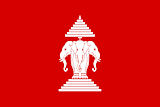
Im Königreich Laos wird in fünf der zehn Provinzen der Notstand ausgerufen, da die von Nordvietnam unterstützte Pathet Lao (ປະເທດລາວ) weite Teile des Landes unter Kontrolle gebracht hat. In einem Telgramm an den UNO-Generalsekretär erklärt die Regierung, dass Nordvietnam eine Kampagne der Einschüchterung betreibe, indem es eine Revolte inszeniere und Waffen an die laotischen Aufständischen liefere.
Abb.: Laos
[Bildquelle: CIA. -- Public domain]
1959-08-06
Pockenepidemie in sechs Provinzen des südlichsten Thailand. Im Juli 125 Todesopfer und 700 weitere Erkrankungen.
Abb.: Pocken
[Bildquelle: H. G. Fox, 1886 / Wikimedia. -- Public domain]
1959-08-11
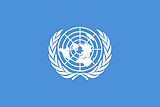
Es erscheint:
Faris, Donald K. <1898 - 1974>: Community development training in Thailand / prepared for the Government of Thailand by Donald K. Faris. -- New York : United Nations, Commissioner for Technical Assistance, Dept. of Economic and Social Affairs, 1959-08-11. -- 27 pages ; 28 cm. -- (Report / United Nations Programme of Technical Assistance)
"As the team members [i.e. Fundamental Education Organizers] become acquainted with the villagers, they begin to realize that work of various kinds has been going on in the villages long before their arrival, and they must learn to recognize and respect the considerable knowledge accumulated by the villagers themselves over the years. This sometimes necessitates a radical adjustment in the attitudes of the students before they are ready to work with people." [Zitiert in: Nairn, Ronald C.: International aid to Thailand: the new colonialism?. -- New Haven : Yale University Press, 1966. -- 228 S. ; 22 cm. -- (Yale studies in political science ; 19). -- S. 63. -- Fair use]
"When increased production is discussed with villagers, a question frequently raised is: "where can we sell our products and how much can we get for them?" . . . farmers claimed that when they had increased their production of peanuts, loc, cassava and the like, in the past, markets were soon glutted." [Quelle: Nairn, Ronald C.: International aid to Thailand: the new colonialism?. -- New Haven : Yale University Press, 1966. -- 228 S. ; 22 cm. -- (Yale studies in political science ; 19). -- S. 74. -- Fair use]
1959-08-24
Thai Airways und Scandinavian Airlines System (SAS) beschließen gemeinsam die Fluggesellschaft Thai Airways International (บริษัท การบินไทย จำกัด) zu gründen. Air Marshall Chalermkiat Wattanakul wird Vorsitzender des Aufsichtsrats.
Abb.: Hauptsitz von Thai Airways International, Bangkok, 2006
[Bildquelle: Terence Ong / Wikipedia. -- GNU FDLicense]
"Thai Airways International (Thai: บริษัท การบินไทย จำกัด), Kurzform THAI, ist die staatliche Fluggesellschaft Thailands mit Sitz in Bangkok und Luftfahrtdrehkreuz am Flughafen Suvarnabhumi. Die Fluglinie ist Gründungsmitglied der Star Alliance. Geschichte
Bereits 1951 entstand durch den Zusammenschluss von Siamese Airways und Pacific Overseas Airlines die Fluggesellschaft Thai Airways. Diese bediente neben Inlandsstrecken auch einige wenige Verbindungen zu nahen ausländischen Flughäfen wie Hongkong und Tokio.[3]
1960er und 1970erEnde der 1950er Jahre entwickelte die thailändische Inlandsfluggesellschaft Thai Airways Company (TAC) mit SAS ein Konzept, um in das internationale Geschäft einzutreten. Die Zusammenarbeit zwischen Thai und SAS in Form eines am 24. August 1959 unterzeichneten Joint Ventures, ist eine der ältesten Luftfahrtallianzen überhaupt. Die offizielle Gründung von Thai Airways wurde mit der Eintragung der Unternehmensform ins Register am 29. März 1960 vollzogen, mit einem Einlagekapital von 2 Millionen Baht, woran Thai Airways zu 70% und SAS zu 30 % beteiligt waren. Seit dem ersten Flug am 1. Mai 1960 sind die Passagierzahlen rasant gestiegen. Das neue Unternehmen trug den Namen Thai Airways International Company Limited, das Firmenlogo ist bis heute eine Orchideeenblüte. [4] [5] [6]
Am 1. Mai 1960 nahm die Fluglinie den Flugbetrieb mit drei samt Piloten von SAS gestellten Maschinen des Typs DC-6B auf. Im ersten Jahr konnten 83.000 Passagiere befördert werden und schon damals erhielt der Bordservice zu den neun Zielen den Namen "Royal Orchid". 1962 folgte mit Convair CV990A Coronado der erste Jet, der später durch die französische Caravelle und die Douglas DC-8 ersetzt wurde. Danach wurden auch DC-9 und DC-10 beschafft. 1966 war Thai die erste Fluglinie Asiens, die ausschließlich mit Jets operierte.
Ab 1971 standen erstmals interkontinentale Ziele im Flugplan. Sydney war das erste Ziel, 1972 folgte Kopenhagen und ab 1973 Frankfurt und London. Zu diesem Zeitpunkt war Thai mit 3.000 Mitarbeitern bereits der größte Arbeitgeber Thailands. Nach Abgabe der Beteiligung der SAS (ab 1975) stockte die thailändische Regierung ihren Anteil sukzessive auf. 1977 war der Staat bereits alleiniger Eigentümer.
Das Airbus-Zeitalter läutete Thai mit dem Muster Airbus A300 im Jahr 1978 ein. Sie gelten auch heute noch als tüchtige „Arbeitspferde“ auf den innerasiatischen Routen, werden aber sukzessive aus der Flotte entfernt. Die erste Boeing 747 stieß im darauffolgenden Jahr zur Flotte.
1980er und 1990er1988 verschmolzen die beiden Airlines TAC und Thai Airways zu Thai Airways International PCL.
Mit Gründung der Star Alliance im Jahr 1997 wurden auch die 1990er Jahre in der Geschichte der Thai Airways geprägt.
Jüngere Geschichte seit 20002004 gründete das Unternehmen die Tochtergesellschaft Nok Air um im Markt mit einer Billigfluggesellschaft anderen Unternehmen mithalten zu können. Mit Inbetriebnahme ihres ersten Airbus A340-500 am 1. Mai 2005 wurde auch ein neues Erscheinungsbild sowie eine neue Farbgebung eingeführt.
Zum 1. Juli 2008 wurde die Ultra-Langstrecke, die nonstop in 17 Stunden und 30 Minuten von Bangkok zum Flughafen New York-John F. Kennedy führte, eingestellt. Sie wurde bis dahin mit Airbus A340-500 bedient. Im selben Jahr machte Thai Airways erstmals in ihrer Geschichte Verluste. Sie begründete dies vor allem auf die gestiegenen Treibstoffkosten, die weltweite Rezession und die Besetzung der beiden Flughäfen von Bangkok während der politischen Unruhen.
Im August 2010 wurde die Gründung einer neuen Billigfluggesellschaft namens Thai Tiger bekannt gegeben. Das Joint Venture von Thai Airways International und Tiger Airways soll Anfang 2011 den Flugbetrieb aufnehmen.[7]
Im April 2011 wurde bekannt gegeben, dass die ab Sommer 2012 auszuliefernden Airbus A380-800 ausschließlich nach Europa eingesetzt werden sollen, darunter als erste Ziele nach London und Frankfurt am Main.[8] Im Juni 2011 wurden Planungen bekannt, nach denen Thai Airways in den nächsten Jahren zudem insgesamt 37 neue Flugzeuge leasen will, darunter auch Airbus A350 und Boeing 787."
[Quelle: http://de.wikipedia.org/wiki/Thai_Airways_International. -- Zugriff am 2011-11-06]
1959-09

Abkommen mit Laos, dass die Royal Thai Army 1400 laotische Fallschirmjäger in Antiguerilla-Taktik ausbildet. Das Programm heißt Project Erawan und steht unter dem Kommando von Lt. Col. Phytoon Inkatanawat.
1959-09

Interner Bericht:
Bertholet, C. J. L. ; Bencha Diswatt: Housing and food paterns in eleven villages in Northeast Thailand. -- Ubol : Research Section Tuffec, 1959-09
1959-09-07


Der Weltsicherheitsrat berät über die Lage in Laos. Thailand hatte die UNO um sofortige Entsendung von UNO-Truppen gegen die Aggression Nordvietnams in Laos ersucht. Der Weltsicherheitsrat beschließt, Beobachter nach Laos zu schicken.
1959-09-25

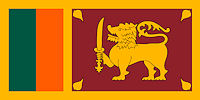
Ceylons Ministerpräsident Solomon West Ridgeway Dias Bandaranaike (සොලමන් වෙස්ට් රිජ්වේ ඩයස් බණ්ඩාරනායක, geb. 1899) wird vom buddhistischen Mönch Talduwe Somarama Thero (1915 - 1962) ermordet.
Abb.: Solomon West Ridgeway Dias Bandaranaike (සොලමන් වෙස්ට් රිජ්වේ ඩයස් බණ්ඩාරනායක)
[Bildquelle: Wikimedia. -- Public domain]
"Talduwe Ratugama Rallage Weris Singho better known as Talduwe Somarama (1915–1962) shot and killed Solomon Bandaranaike, the Prime Minister of Sri Lanka (then called Ceylon) in 1959. He later openly converted to Christianity, just weeks prior to being hanged in the Welikada gallows. Early life
Somarama was born on August 27, 1915, to Iso Hamy and Ratugama Rallage Dieris Appuhamy. He was robed when he was 14 on January 20, 1929, and received his schooling at Talduwa Ihala School. He allegedly received his higher ordination in Kandy on June 25, 1936.
The AssassinationAllegedly drafted in to the conspiracy by Mapitigama Buddharakkitha (1921−1967) , the chief incumbent of the Kelaniya Raja Maha Vihara (කැලණිය රජමහා විහාරය),[1] Somarama reluctantly consented to assassinate the Prime Minister, "for the greater good of his country, race and religion". Although Buddharakkitha attributed Bandaranaike's failure to aggressively pursue the Nationalist reforms as the motive to eliminate him, the real reason appeared to be the Prime Minister's refusal to award business deals, in particular a shipping contract, to a company floated by the Chief Priest, Mapitigama Buddharakkitha.[1]
The date was set to September 25, 1959, when Somarama was to visit the Prime Minister at his home and shoot him at point blank range.[2] His saffron robes gave him free access to 'Tintagel', the private residence of Bandaranaike, in Rosmead Place, Colombo. As the Premier commenced his routine meetings with the public, Somarama waited in patience for his turn. When the monk's presence was announced to him, Bandaranaike rose to greet him in the traditional Buddhist manner. The assassin then pulled out the revolver hidden in his robes and fired at the prostrate Prime Minister. Somarama was injured in firing between himself and the Prime Minister's bodyguards.
The wounded Premier was rushed to hospital and died the following day in spite of a six-hour surgery by the country's most skilled surgeons. In his message to the nation from his bed in the Merchant's Ward of the General Hospital in Colombo, Bandaranaike referred to his unknown assassin "as a foolish man dressed in the robes of a monk", but requested that the authorities "show compassion to this man and not try to wreak vengeance on him."
Somarama then faced trial, along with four other involved in the conspiracy. It was a hopeless case, and in spite of a resourceful defense the jury unanimously found Somarama guilty of the capital offense. Before sentencing him to death, the trial judge, Justice T.S. Fernando, QC, CBE, told Somarama he had a "streak of conscience as he did not attend court in his saffron robes." The chief conspirator, Mapitigama Buddharakkitha and H. P. Jayawardena, a businessman closely associated with him, were found guilty of conspiracy to murder. Bandaranaike had suspended capital punishment, but after his death the government had it restored. In an apparent blunder by the draftsman, the law re-establishing the death penalty failed to include conspiracy to murder. As a consequence, while Somarama would hang, the two chief conspirators escaped with life sentences.
Somarama was hanged on 7 July 1962. He gave up his robes a fortnight before his hanging and, two days before his execution, was baptized as a Christian by an Anglican priest.[3] Prison officials said that this was so that he could seek "the forgiveness that the Buddhist religion does not grant."[4] Journalists in Ceylon, however, suggested a different motive: to kill a fellow Buddhist was a sin, which he had committed by killing Bandaranaike, but by converting he would spare the gaolers and hangmen from committing the same sin."
[Quelle: http://en.wikipedia.org/wiki/Talduwe_Somarama. -- Zugriff am 2013-01-23]
1959-09-29

Die International Bank for Reconstruction and Development (World Bank) veröffentlicht "A public development program for Thailand". Das Programm konzentriert sich auf den Agrarsektor, in dem in Thailand 80% der Bevölkerung tätig sind.
1959-10-14

Tod des laotischen Prinzen Phetsarath Ratanavongsa (ເຈົ້າເພັດຊະລາດ ລັດຕະນະວົງ, 1890 - 1959)
Abb.: Prinz Phetsarath auf Yantratuch
[Bildquelle: Tappe, Oliver: Geschichte, Nationsbildung und Legitimationspolitik in Laos : Untersuchungen zur laotischen nationalen Historiographie und Ikonographie. -- Berlin : Lit, 2008. -- 393 S. : Ill. ; 24 cm. -- (Comparative anthropological studies in society, cosmology and politics ; vol. 4.). -- ISBN 978-3-8258-1610-0. -- Zugl. Münster, Univ., Diss. 2007. -- S. 371]
"Prinz Phetsarath Ratanavongsa[1] (laotisch ເຈົ້າເພັດຊະລາດ ລັດຕະນະວົງ [tɕâw pʰētsālâːt lāttánāʋóŋ], Vollständiger Titel Tiao Maha Oupahat Phetsarath[2]; * 19. Januar 1890 in Luang Prabang (ຫຼວງພະບາງ); † 14. Oktober 1959 ebenda) war ein Mitglied des laotischen Königshauses und Politiker. Er war ein Anführer der nationalen Unabhängigkeitsbewegung, von 1942 bis 1945 Premierminister und von 1957 bis zu seinem Tod erster und letzter Uparat („Vizekönig“) des Königreichs Laos (ພຣະຣາຊອານາຈັກລາວ). Phetsarath war der zweite Sohn des Prinzen Bounkhong, dem Uparat des damaligen Königreichs Luang Prabang, das bis 1893 Vasall Siams, anschließend unter französischem Protektorat war. Seine Mutter war Prinzessin Thongsy. Prinz Souvanna Phouma (ສຸວັນນະພູມາ, 1901 - 1984) war sein Vollbruder, unter seinen Halbbrüdern waren die Prinzen Souvannarath und Souphanouvong (ສຸພານຸວົງ, 1909 - 1995). Er wurde zunächst am Hof in Luang Prabang unterrichtet, ab 1904 besuchte er das Lycée Chasseloup-Laubat in Saigon. Als erstes Mitglied der laotischen Königsfamilie setzte er seine Bildung in Frankreich fort, an der École coloniale, die Spitzenbeamte für den französischen Kolonialdienst ausbildete.[3]
Dienst in der Kolonialverwaltung und Vizekönig von Luang PrabangNach seiner Rückkehr 1913 hatte er Positionen in der Verwaltung Französisch-Indochinas und des Protektorats Laos inne. Er wurde 1919 Verwaltungsdirektor von Laos, zeitgleich bis 1930 Mitglied des Regierungsrats von Indochina, von 1932 bis 1937 Mitglied des Wirtschaftsrats. 1923 wurde er außerdem Generalinspekteur der politischen und Verwaltungsangelegenheiten für Laos. Diese Position erlaubte es ihm, zunehmend Lao in den Verwaltungsdienst aufzunehmen und so den Einfluss der Vietnamesen, die innerhalb Indochinas eine dominierende Stellung hatten, zu begrenzen. Er förderte außerdem die traditionelle Kultur und Kunst, was ein zunehmendes Interesse für die laotische nationale Identität, zumindest innerhalb der Elite, auslöste. Seine herausgehobene Stellung in der Kolonialverwaltung machte ihn zum mächtigsten Laoten, noch vor König Sisavang Vong (ເຈົ້າມະຫາຊີວິດສີສະຫວ່າງວົງ, 1885 - 1959), dem die Franzosen nur eine repräsentative Position zubilligten.
Der Titel Uparat, nach dem Tod seines Vaters 1920 abgeschafft, wurde 1941 für Phetsarath wieder eingeführt. Zu dieser Zeit war die Kolonialmacht infolge der Kapitulation Frankreichs im Zweiten Weltkrieg geschwächt und desorientiert. Die Vichy-Regierung musste den übermächtigen Japanern weitgehende Stationierungs- und Durchmarschrechte in Indochina zubilligen, sodass diese bei formeller Anerkennung der französischen Oberhoheit als faktische Besatzungsmacht auftrat. Die laotischen Nationalisten nutzten diese Schwäche der Franzosen. Der König ernannte 1942 zum ersten Mal eine laotische Regierung mit Prinz Phetsarath als Premierminister. Anders als der damalige Kronprinz und spätere König Savang Vatthana (ເຈົ້າສີສະຫວ່າງວັດທະນາ, 1907 - 1978) war Phetsarath zur Zusammenarbeit mit den Japanern bereit, die Laos im April 1945 als Marionettenstaat in die Unabhängigkeit entließen.[3]
UnabhängigkeitsbewegungEr wurde, neben seinen Brüdern Souvanna Phouma und Souphanouvong, einer der Anführer der nationalen Befreiungsbewegung Lao Issara (ລາວອິດສະຫຼະ). Mit dem Rückzug der Japaner übernahmen sie am 27. August 1945 die Regierungsgewalt in Vientiane (ວຽງຈັນ). Prinz Phetsarath brach mit dem König, der die Rückkehr unter das französische Protektorat zulassen wollte, während die Lao Issara nach der vollständigen Unabhängigkeit und Ei
nheit des Landes strebten. Sie bildeten einen provisorischen „Rat des Volkes“ (khana kammakan ratsadon), riefen am 12. Oktober 1945 die Unabhängigkeit und Einheit von Laos aus und erklärten am 20. Oktober den König für abgesetzt. Nicht nur dieser, sondern auch Fürst Boun Oum (ເຈົ້າບຸນອຸ້ມ ນະ ຈຳປາສັກ, 1911/12 - 1980) von Champasak (ຈຳປາສັກ) in Südlaos stellte sich gegen sie und ermöglichte den Franzosen eine Rückkehr. Im Mai 1946 hatten diese wieder ganz Laos unter ihre Kontrolle gebracht. Die Führung der Lao Issara um Prinz Phetsarath floh nach Thailand, wo sie eine Exilregierung unter dem Schutz des dortigen Ministerpräsidenten Pridi Phanomyong (ปรีดี พนมยงค์, 1900 - 1983) bildete.[3]
Exil, Rückkehr und TodNachdem die Franzosen der Errichtung eines geeinigten Königreichs Laos als selbstständiges Mitglied der Union française erlaubt hatten, kämpfte der radikale Flügel, einschließlich Prinz Souphanouvongs, von Vietnam aus gemeinsam mit den Việt Minh und den Khmer Issarak im Indochinakrieg gegen die Franzosen und auch die königlich-laotische Regierung. Aus ihnen entwickelte sich die pro-kommunistische Bewegung Pathet Lao (ປະເທດລາວ). Gemäßigte Vertreter der Lao Issara, wie Prinz Souvanna Phouma, suchten dagegen die Versöhnung mit dem König, distanzierten sich von Phetsarath und kehrten 1949 nach Laos zurück. Phetsarath blieb im Exil in Bangkok und stand zwischen allen Stühlen. Eine Einladung Souphanouvongs und Hồ Chí Minhs (1890 - 1969), Oberhaupt einer neuen Gegenregierung der Pathet Lao mit Unterstützung Nordvietnams zu werden, lehnte er 1951 ab, möglicherweise aufgrund seiner langgehegten Abneigung gegen die Vietnamesen.[4]
Im Königreich Laos hatte er seine Titel verloren. Eine Aussöhnung mit dem König, den er versucht hatte zu stürzen, war nicht denkbar. Als ihm der Außenminister Phoui Sananikone nach der Genfer Indochinakonferenz 1954 anbot, nach Laos zurückzukehren, bestand er darauf, all seine Titel und Positionen von 1945 zurückzuerhalten sowie zum Premierminister auf Lebenszeit ernannt zu werden. Diese Forderung war angesichts des inzwischen errichteten parlamentarischen Systems unerfüllbar. In der instabilen Situation nach der Niederlage der Franzosen im Indochinakrieg war Phetsarath mutmaßlich Hintermann eines gescheiterten Umsturzversuchs von Offiziersschülern im Mai und des Attentats auf den Verteidigungsminister Kou Voravong im September. Wahrscheinlich hatte er dabei thailändische Unterstützung.[5][6]
Im Rahmen der Aussöhnung von Royalisten und Pathet Lao nach Ende des Indochinakriegs und den Gesprächen, die zu einer Allparteienkoalition unter seinem Bruder Souvanna Phouma führten, konnte Phetsarath im März 1957 schließlich nach Laos zurückkehren. Er bekam auch seinen Titel als Uparat wieder. In dieser Funktion reiste er durch das Land und sprach sich für nationale Einheit aus. Politisch spielte er jedoch keine Rolle mehr. Er starb am 14. Oktober 1959, genau zwei Wochen vor König Sisavang Vong.[7]
NachwirkungVon westlichen Autoren wird Prinz Phetsarath oftmals als „Vater des laotischen Nationalismus“ oder „die Schlüsselfigur in der Entwicklung des laotischen Nationalismus“ bezeichnet. Sie betonen seine herausgehobene Rolle zuerst bei der Modernisierung der Verwaltung von Laos als Kolonie und dann im antikolonialen Befreiungskampf.[8] In der Geschichtsschreibung der Demokratischen Volksrepublik Laos spielt er dagegen nur eine untergeordnete Rolle. In ihr wird Phetsaraths Halbbruder, das Oberhaupt der Pathet Lao und spätere Staatspräsident der DVR, Prinz Souphanouvong ab 1945 als einziger Führer der nationalen Freiheitsbewegung des laotischen Volkes genannt. Jedoch wird Phetsaraths Rolle als Patriot positiv bewertet, gegenüber dem pro-französischen König Sisavang Vong oder dem „Reaktionär“ Katay Don Sasorith (ກະຕ່າຍ ໂດນສະໂສລິດ, 1904 - 1959). Anerkannt wird außerdem sein Verdienst um die laotische Sprache und Kultur, das zur Herausbildung der laotischen nationalen Identität beigetragen hat.[9]
Große Popularität hat Prinz Phetsarath im Volksglauben mancher Laoten. Sie schreiben ihm übernatürliche Fähigkeiten zu. Beispielsweise soll er sich unsichtbar gemacht und in Tiere verwandelt haben. Aus diesem Grunde sind Amulette mit dem Bild Phetsaraths als Glücksbringer verbreitet.[10]
[Quelle: https://de.wikipedia.org/wiki/Phetsarath. -- Zugriff am 2016-02-13]
1959-10-20

Telegramm der US-Botschaft Bangkok an das Department of State:
"SUBJECT: Role of the Military in Less Developed Countries 1) There can be no quarrel with the basic proposition, posed in the papers circulated with CA–1333, that the US Government must work with authoritarian military governments in the less developed countries of Free Asia and Africa. As the Department has pointed out, “authoritarianism will remain the norm in Free Asia for a long period.” This being the case, the problem of explaining to the American people and to friendly nations which are not sympathetic toward an authoritarian form of government why we support such governments becomes a matter of public relations, not of policy. We need not, for example, feel self-conscious about our support of an authoritarian government in Thailand based almost entirely on military strength. In addition to the generalized guide lines advocated in paragraph 7, pp. 23–4 of the study “Political Implications of Afro-Asian Military Takeovers”3 and aside from the practical matter of Thailand’s not being ready for a truly democratic form of government, it can be pointed out that the United States derives political support from the Thai Government to an extent and degree which it would be hard to match elsewhere. Furthermore, the generally conservative nature of Thai military and governmental leaders and of long-established institutions (monarchy, Buddhism) furnish a strong barrier against the spread of Communist influence. Moreover, the Thai military rule does not weigh onerously on the people. Many of the individual liberties which we commonly associate with our form of government and find denied under authoritarian regimes, such as freedom of speech and religion, the right to own property, etc., flourish in Thailand to a remarkable degree; and Marshal Sarit shows his sensitivity to what he believes is public opinion in many ways.
[...]
4) The Department’s concern over “second stage revolutions,” stemming from disregard for economic development and the stifling of opposition groups, would also appear inapplicable at the present stage to Thailand. Sarit’s interest in and appetite for economic development needs to be constantly damped down rather than whetted. Opposition groups of the type described by the Department—labor, students, intelligentsia, dissident younger officer groups—are, with the exception of the last-named, of no immediate significance as potential leaders of “secondary revolutions;” and any revolution staged at this time by dissident officers in Thailand would follow tradition and produce only surface change.
One note of warning needs to be sounded with regard to the Department’s assertion—with which I agree—that “the complexity of the developmental process requires that a military regime utilize civilian competence to the utmost. …”5 In Thailand Sarit appears to be well aware of this necessity and has mustered in one grouping or another the best civilian brains the country has to offer. Furthermore, the civilian bureaucracy remains intact. Nevertheless, Sarit’s reliance on these civilian advisers has been a major irritant in his relations with his military cohorts who, having supported Sarit in his drive to supreme power, resent his reliance on civilian advisers in furthering the economic development of Thailand.
It is not my purpose here to whitewash Marshal Sarit, to ascribe to him virtues he does not possess or to make the obviously false claim that graft and corruption have been eliminated in Thailand never to return. I believe, however, that it is fair to say that Sarit’s concepts and actions as we perceive them approach the Department’s definition of the “happy medium" from the standpoint of US interests as a situation which encompasses “a military regime ‘civilianized’ to the greatest extent possible and headed by a military leader who saw security and development in perspective and thereby evidenced political leadership of the type required in a developing society.”
[...]
6) [...]
The principal disadvantages we face in Thailand are precisely those which the Department foresees as the possible long range concomitant of authoritarian government—a stifling of democratic values and parliamentary procedures. Sarit’s “revolution” of October 1958 and its aftermath unquestionably constitute a setback for the trend, however faint, toward a more democratic form of government which had its origins in the 1932 coup d’etat. Nevertheless, as the Department’s paper in Thailand correctly points out, there is growing in Thailand a political consciousness among urban Thai and, I venture to add, elsewhere in the countryside as well. The various components of this mission—USOM [United States Operations Mission], JUSMAG [Joint United States Military Advisory Group] and USIS [United States Information Service] as well as the Embassy proper—have all played a part in the furthering of this process. As communications and educational facilities continue to improve in Thailand and as increasing numbers of Thai military personnel, government and business leaders and technicians are exposed to the US and to US habits of thinking, political consciousness in Thailand will continue to develop. That the Thai system of government will ever resemble the US system very closely is questionable but an increasing responsiveness to public opinion appears inevitable if basic current trends continue. The US is in a unique position to encourage these trends, the while it supports a country very favorably disposed toward the US and its policies and one which does not present us with many of the problems with which the Department’s instruction is concerned.
[...]
U. Alexis Johnson"
[Quelle: https://history.state.gov/historicaldocuments/frus1958-60v15/d534. -- Zugriff am 2014-10-24]
1959-11-01

Erstflug der Lufthansa Hamburg-Bangkok mit einer Super G. Constellation. Flugzeit: 36 Stunden
Abb.: Lufthansa Super G. Constellation, 1956
[Bildquelle: RuthAS / Wikimedia. -- Creative Commons Lizenz (Namensnennung)]Wegen des Widerstands von Thai International und Scandinavian Airlines muss die Lufthansa bis 1965-02-09 (Luftverkjehrsabkommen mit der Bundesrepublik Deutschland) die Passagierzahlen kontigentieren.
Der Lufthansa-Angestellte Lutz Hartdegen gründet die Hartdegen Stiftung gegen Lepra.
Siehe dazu:
Hartdegen, Lutz <1913 - 1982>: Die Leprainsel im River Ping oder Friede ist das Dach der Welt. -- Rothenburg ob d. Tauber : Peter, Gebr. Holstein, 1969. -- 119 S. : Ill. ; 20 cm.
Abb.: Einbandtitel
1959-11-02
Jim Thompson (1906 - ?) öffnet sein klassisches Thaihaus (heute: Jim Thompson House - พิพิธภัณฑ์บ้านจิม ทอมป์สัน) für geführte Besichtigungen durch die Öffentlichkeit.
Abb.: Lage des Jim Thompson House (บ้านจิม ทอมป์สัน)
[Bildquelle: OpenStreetMap. -- Creative Commons Lizenz (Namensnennung, share alike)]
Abb.: Jim Thompson House
[Bildquelle: ronan crowley. -- http://www.flickr.com/photos/rocrowley/5591312034/. -- Zugriff am 2011-11-06. -- Creative Commons Lizenz (Namensnennung, keine Bearbeitung)]
"The Jim Thompson House is a museum in Bangkok. It is a complex of various old Thai structures that the American businessman Jim Thompson collected in from all parts of Thailand in the 1950s and 60s. It is one of the most popular tourist destinations in Thailand. As Thompson was building his silk company, he also became a major collector of Southeast Asian art, which at the time was not well known internationally. He built a large collection of Buddhist and secular art not only from Thailand but from Burma, Cambodia and Laos, frequently travelling to those Countries on buying trips.
In 1958 he began what was to be the pinnacle of his architectural achievement, a new home to showcase his art collection. Formed from parts of six antique Thai houses, his home (completed in 1959) sits on a klong (canal) across from Bangkrua, where his weavers were then located. Most of the 19th century houses were dismantled and moved from Ayutthaya, but the largest - a weaver's house (now the living room) - came from Bangkuar."
[Quelle: http://en.wikipedia.org/wiki/Jim_Thompson_House. -- Zugriff am 2011-11-06]
1959-11-10

In den USA wird das erste synthetische Penicillin - Syncillin - für den medizinischen Gebrauch freigegeben.
1959-11-15

Erstmals seit 1932 findet wieder eine Königliche Barkenprozession (กระบวนพยุหยาตราชลมารค) für das königliche Kathin (ทอดกฐิน) statt.
Abb.: Königliche Barke, 2007
[Bildquelle: Lerdsuwa / Wikipedia. -- GNU FDLicense]
1959-11-24
Bangkok und Thonburi (ธนบุรี) werden zur Metropole Bangkok vereint.
Abb.: Lage von Thonburi
[Bildquelle: OpenStreetMap. -- Creative Commons Lizenz (Namensnennung, share alike)]
1959-12

USA: Gründung der JASON Defense Advisory Group, kurz JASON
"JASON is an independent group of scientists which advises the United States government on matters of science and technology, mostly of a sensitive military nature. The group was first created as a way to get a younger generation of scientists—that is, not the older Los Alamos and MIT Radiation Laboratory alumni—involved in advising the government. It was established in 1960 and has somewhere between 30 and 60 members. Its work first gained public notoriety as the source of the Vietnam War's McNamara Line electronic barrier. Although most of its research is military-focused, JASON also produced early work on the science of global warming and acid rain.[1] Current unclassified research interests include health informatics, cyberwarfare, and renewable energy. For administrative purposes, JASON's activities are run through the MITRE Corporation, a non-profit corporation in McLean, Virginia, which contracts with the Defense Department.
JASON typically performs most of its work during an annual summer study. Its sponsors include the Department of Defense, the Department of Energy, and the U.S. Intelligence Community. Most of the resulting JASON reports are classified.
The name "JASON" is sometimes explained as an acronym, standing either for "July August September October November", the months in which the group would typically meet; or, tongue in cheek, for "Junior Achiever, Somewhat Older Now". However, neither explanation is correct; in fact, the name is not an acronym at all. It is a reference to Jason, a character from Greek mythology. The wife of one of the founders (Mildred Goldberger) thought the name given by the defense department, Project Sunrise, was unimaginative and suggested the group be named for a hero and his search.
JASON studies have included a now-mothballed system for communicating with submarines using extremely long radio waves (Project Seafarer, Project Sanguine), an astronomical technique for overcoming the atmosphere's distortion (adaptive optics), the many problems of missile defense, technologies for verifying compliance with treaties banning nuclear tests, a 1979 report describing CO2-driven global warming, and the McNamara Line's electronic barrier, a system of computer-linked sensors developed during the Vietnam War which became the precursor to the modern electronic battlefield.
[...]
Early historyIn 1958, a military-issues physics summer study program named Project 137 was launched by physicists John Archibald Wheeler, Eugene Wigner, and Oskar Morgenstern. Participants included Murph Goldberger, Ken Watson, Nick Christofilos, and Keith Brueckner.
Out of that program came the idea of a permanent institution for advanced scientific research, a proposed National Defense Institute, on behalf of the Department of Defense. Wheeler was offered such a position by ARPA's Herb York but turned it down, having put in the effort to establish Project 137. Murph Goldberger also turned down the request.
However, in December 1959 Marvin Stern, Charlie Townes, Brueckner, Watson, and Goldberger met in Los Alamos where several of them had been working on nuclear-rocket research and launched JASON as an ongoing summer study program, with financial and administrative support supplied by the Institute for Defense Analyses. In the early 1960s, JASON had about 20 members. By the end of the decade it had grown to over 40 members, with close ties to the President's Science Advisory Committee. In the early 1970s the backing institution for JASON was changed from IDA to SRI.[8]
The Vietnam War had a significant effect on JASON's membership and research focus. A major initiative of JASON became the McNamara Line electronic barrier. Some members critical of the war like Freeman Dyson left, and others directed JASON research into unclassified, non-military work on behalf of the U.S. Department of Energy on problems like global warming and acid rain. There arose internal conflict between hawkish JASON members such as William Happer, Edward Teller, and William Nierenberg and others such as Gordon J. F. MacDonald, Sid Drell, and Richard Garwin. Public attention to JASON's involvement in the Vietnam War led to public criticism and attacks against JASON members; for example, MacDonald's garage was burned down and Richard Garwin was called a "baby killer.""
[Quelle: https://en.wikipedia.org/wiki/JASON_%28advisory_group%29. -- Zugriff am 2016-05-21]
1959-12-15
Rock 'n' Roll-Musik in Radiosendungen wird verboten. Auch sonst versucht die Regierung Rock 'n' Roll aus Thailand zu vertreiben, da dieser angeblich die Jugendkriminalität fördert.
Abb.: Style map der "Jugendverderbnis" Rock 'n' Roll
[Bildquelle: Godewind / Wikipedia. -- Public domain]
1959-12-12 - 1959-12-17
In Bangkok finden die ersten Southeast Asian Peninsular (SEAP) Games statt. Thailand gewinnt 35 mal Gold, 26 mal Silber und 15 mal Bronze.
Abb.: ®Logo
[Bildquelle: Wikipedia]
"Die Südostasienspiele sind sportliche Wettkämpfe südostasiatischer Staaten. Sie finden alle zwei Jahre statt. In Südostasien werden sie englisch SEA Games genannt. Geschichte
Am 22. Mai 1958, während der 3. Asienspiele in Tokio, beschlossen Vertreter Thailands, Burmas (Myanmar), der Föderation Malaya (heute Malaysia), Laos, Südvietnams und Kambodschas, einen südostasiatischen Sportverband zu gründen, um den Zusammenhalt in der Region zu stärken. Federführend war Laung Sukhumnaipradit, damals Vizepräsident des Thailändischen Olympischen Komitees.
Die ersten Southeast Asian Peninsular Games, an denen auch Singapur teilnahm, wurden vom 12. bis 17. Dezember 1959 in Bangkok abgehalten. Die Spiele 1963 mussten vom Veranstalter Kambodscha abgesagt werden. Ab 1977 nahmen auch Indonesien und die Philippinen teil, und der Name wurde in Southeast Asian Games (Südostasienspiele) geändert. Brunei wurde zwei Jahre später, bei den 10. Südostasienspielen aufgenommen, und Osttimor im Jahre 2003 bei den 22. Spielen.
Thailand veranstaltete bisher sechs Südostasienspiele, Malaysia fünf, Indonesien vier, Singapur drei, die Philippinen drei, Burma (Myanmar) zwei Spiele; Brunei, Vietnam und Laos waren je einmal Veranstalter."
[Quelle: http://de.wikipedia.org/wiki/S%C3%BCdostasienspiele. -- Zugriff am 2011-11-06]
1959-12-18

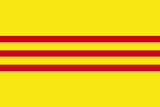
Der König und die Königin treffen in Saigon (Südvietnam, heute Ho Chi Minh City) zu einem Staatsbesuch ein.
Abb.: Lage von Saigon
[Bildquelle: OpenStreetMap. -- Creative Commons Lizenz (Namensnennung, share alike)]
Am 19. Dezember erhält der König den Doktor honoris causa (Docteur en Droit, Honoris Causa) in Rechtswissenschaften der Université de Saigon.
Abb.: Seine Majestät Dr. iur. h. c., Saigon, 1959-12-19
1959-12-22
Die Bangkoker Polizei wird angewiesen, Leute zu vertreiben, die in Cafés herumlungern. Solche Tagediebe seien entweder Landstreicher oder Arbeitslose.
1959-12-24

Wolf Ladejinsky (1899 - 1975), US Landreform-Berater in Südvietnam, in "The Reporter" über den südvietnamesischen Präsidenten Jean-Baptiste Ngô Đình Diệm (1901 - 1963):
"When, on the anniversary of Vietnam’s independence, I asked Pres. Ngo about his role in it, he replied that he was but an instrument of the invisible hand of the Lord. Whether he led the country single-handed or in close cooperation with divine Providence, there is much about his five years in office that is almost incredible." [Zitiert in: Vietnam and America : a documented history / [edited] by Marvin E. Gettleman [and others]. -- rev. and enlarged 2. ed. -- New York : Grove Press, 1995. -- 560 S. ; 25 cm. -- ISBN 0-8021-3362-2. -- S. 138. -- Fair use]
1959-12-31 - 1960-01-07

Sounthone Pathammavong (1911 - ) ist als Army Chief of Staff Ministerpräsident von Laos
ausführlich: http://www.payer.de/thailandchronik/ressourcen.htm
Zu Chronik 1960